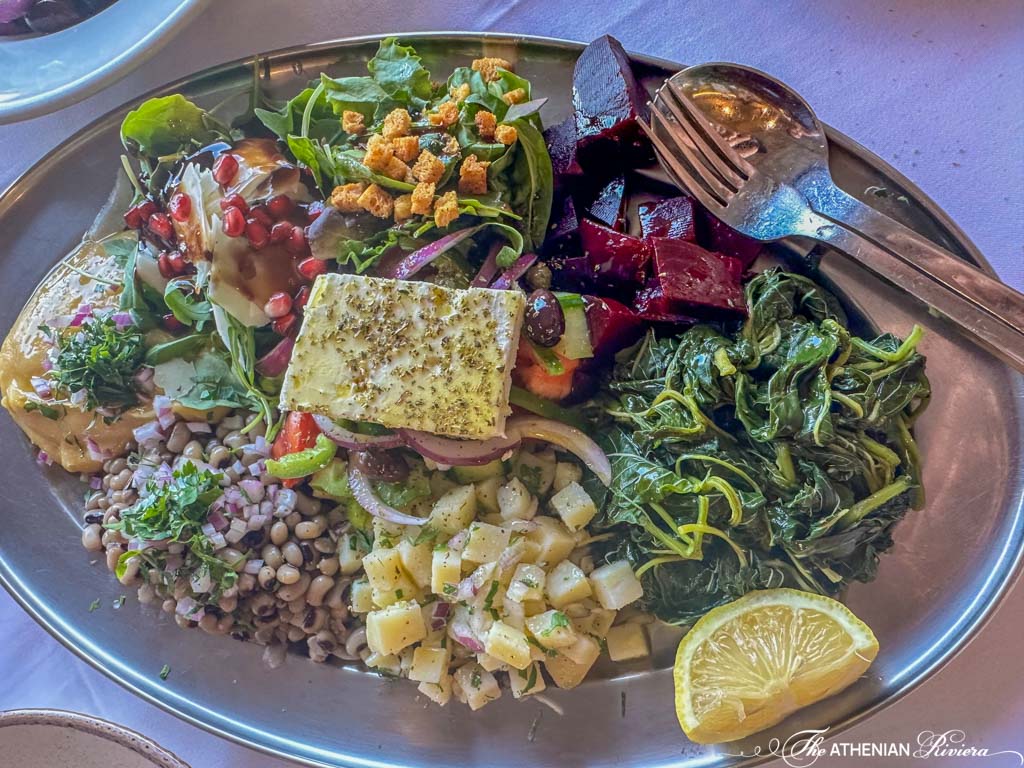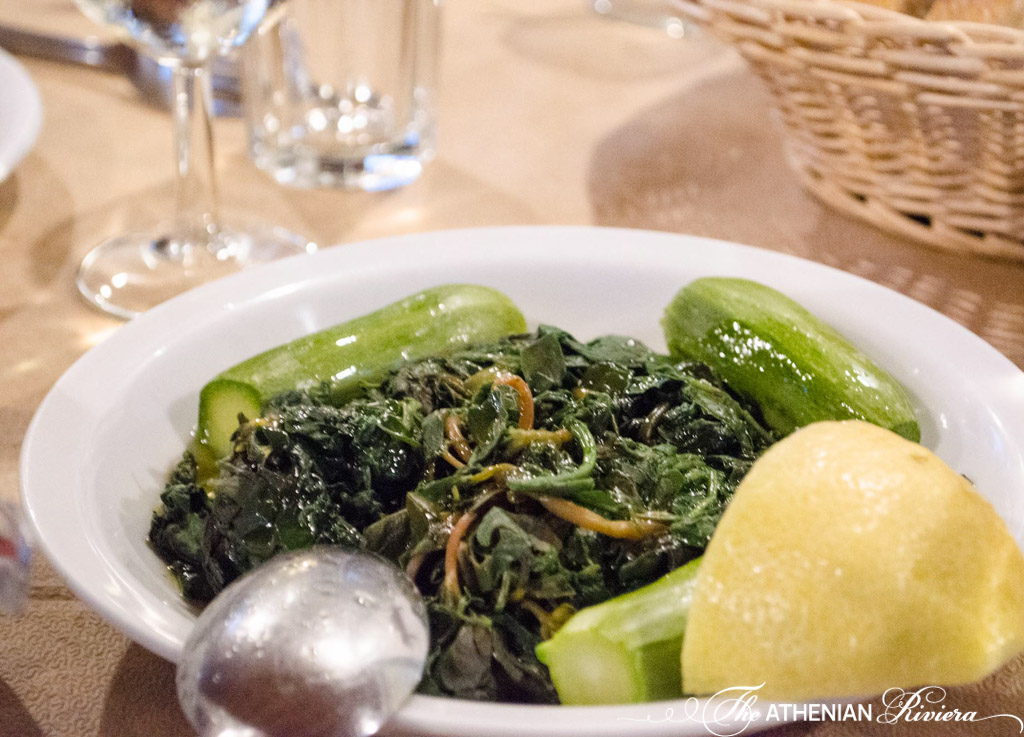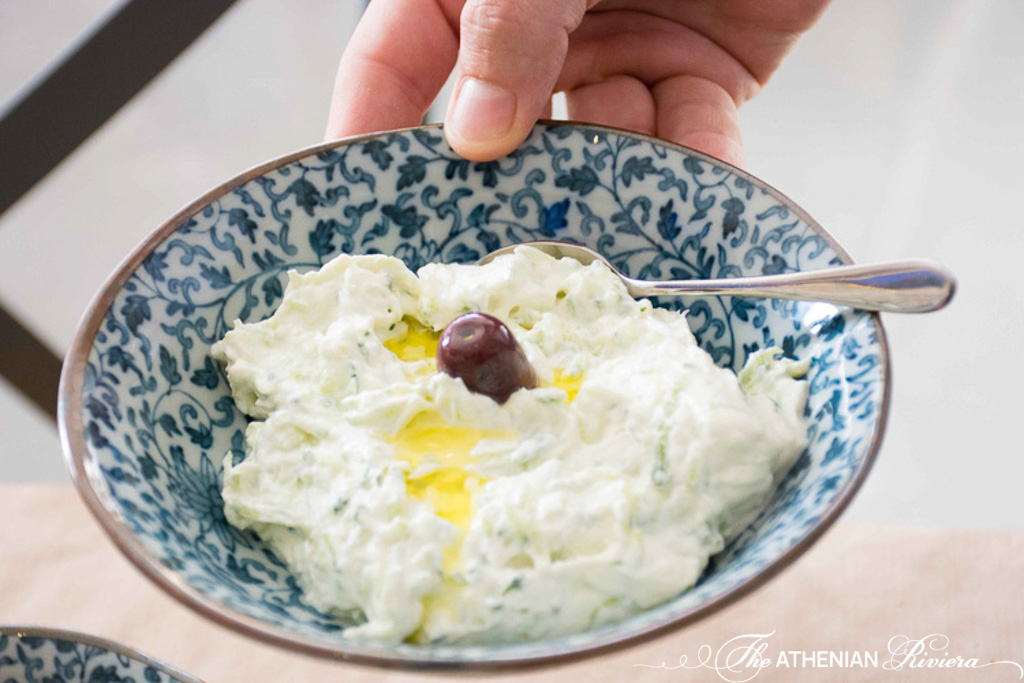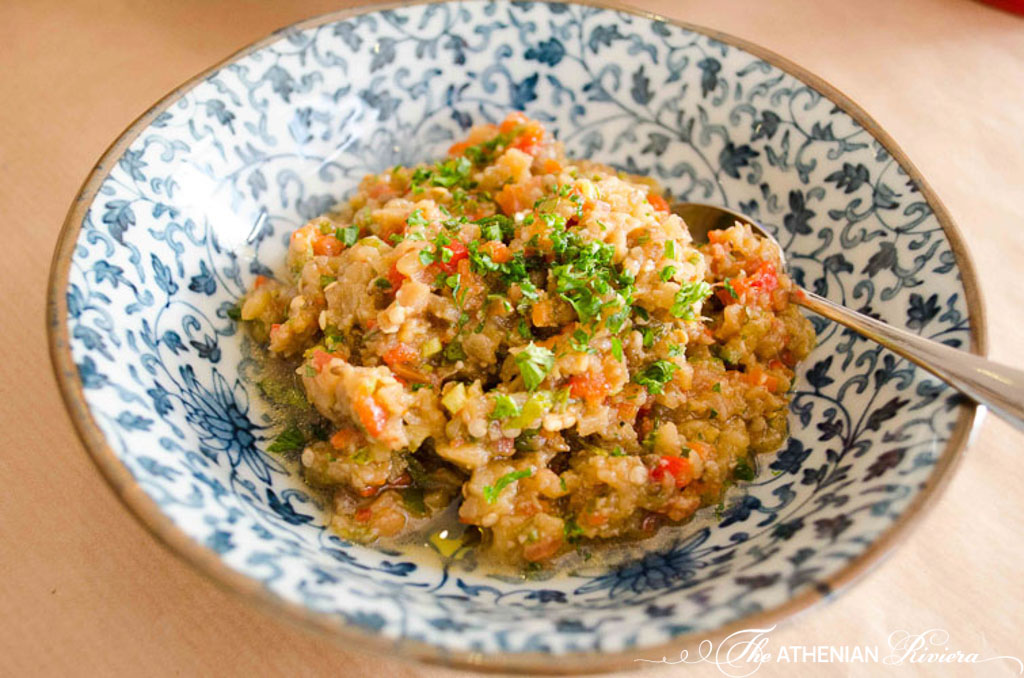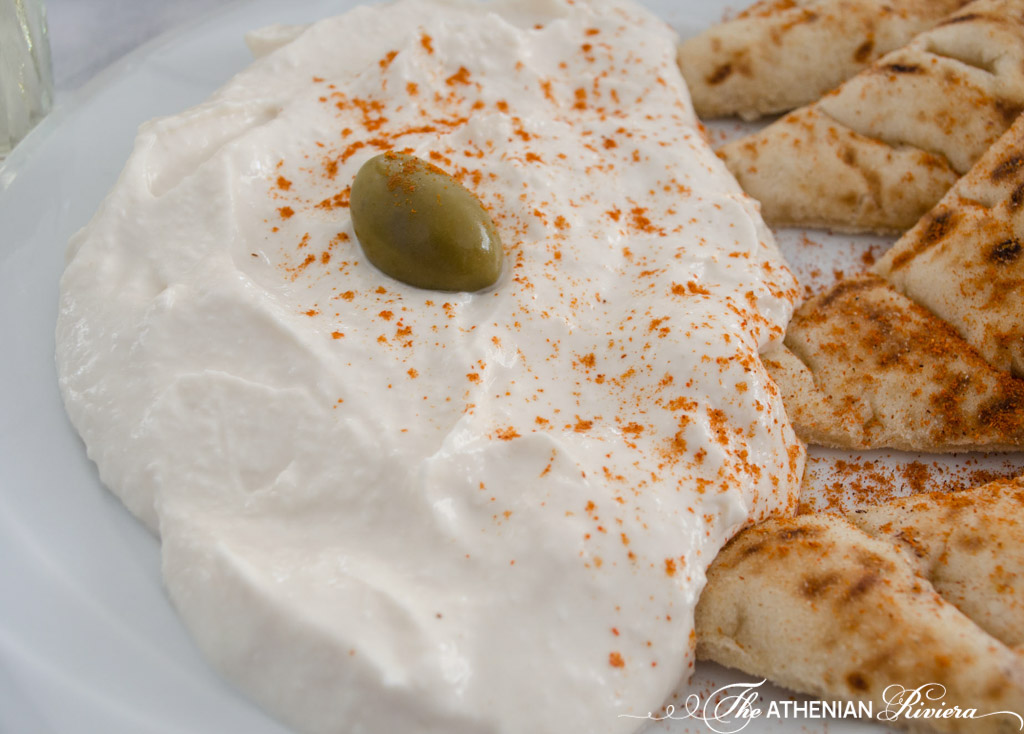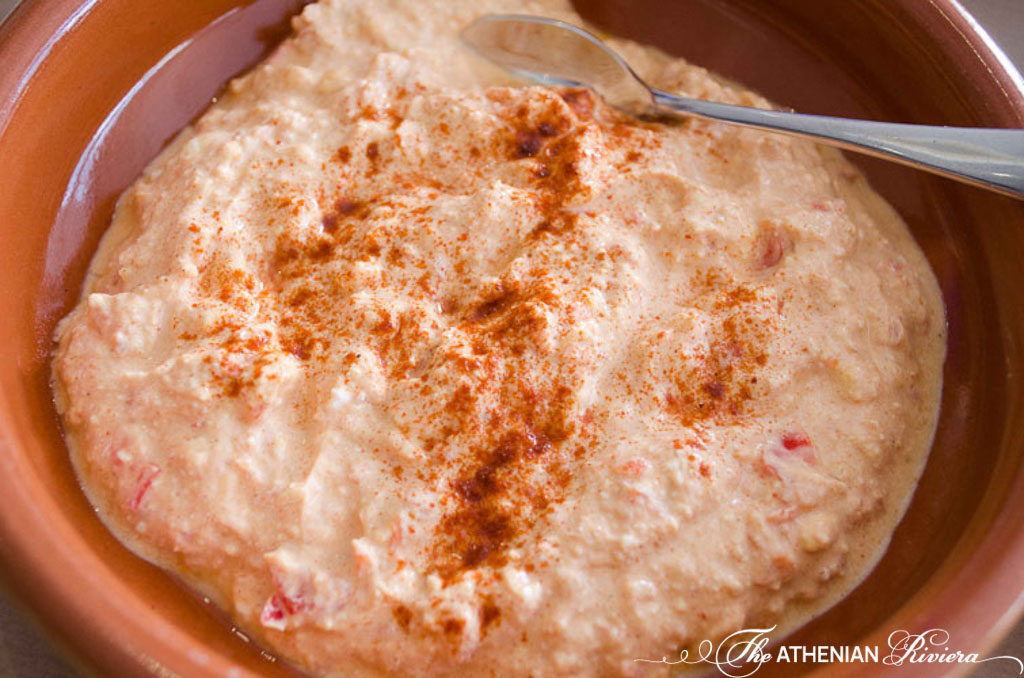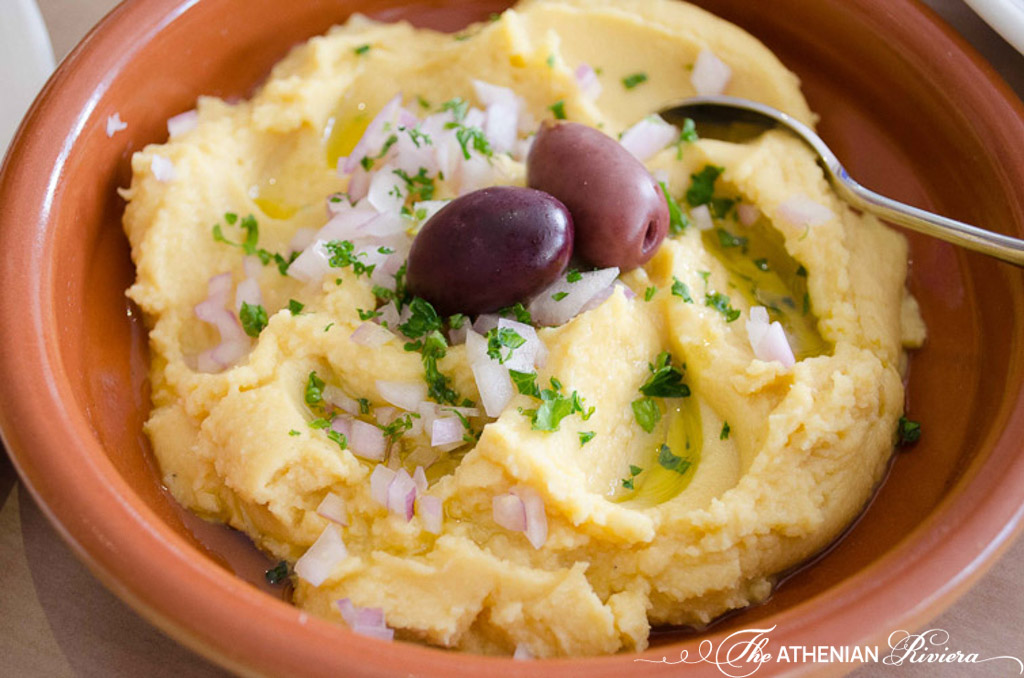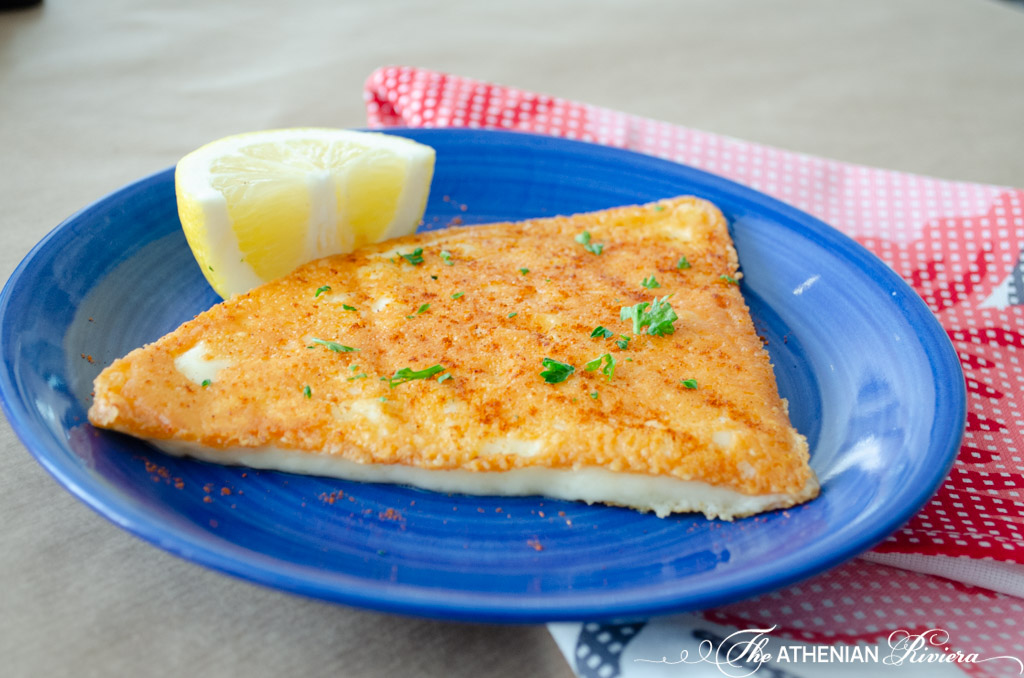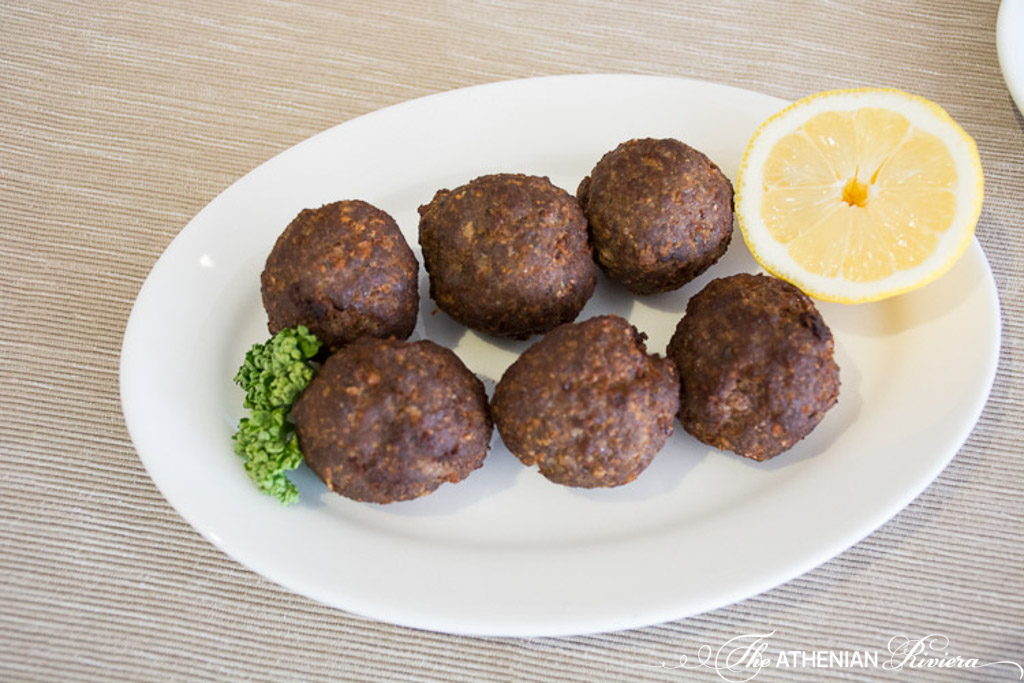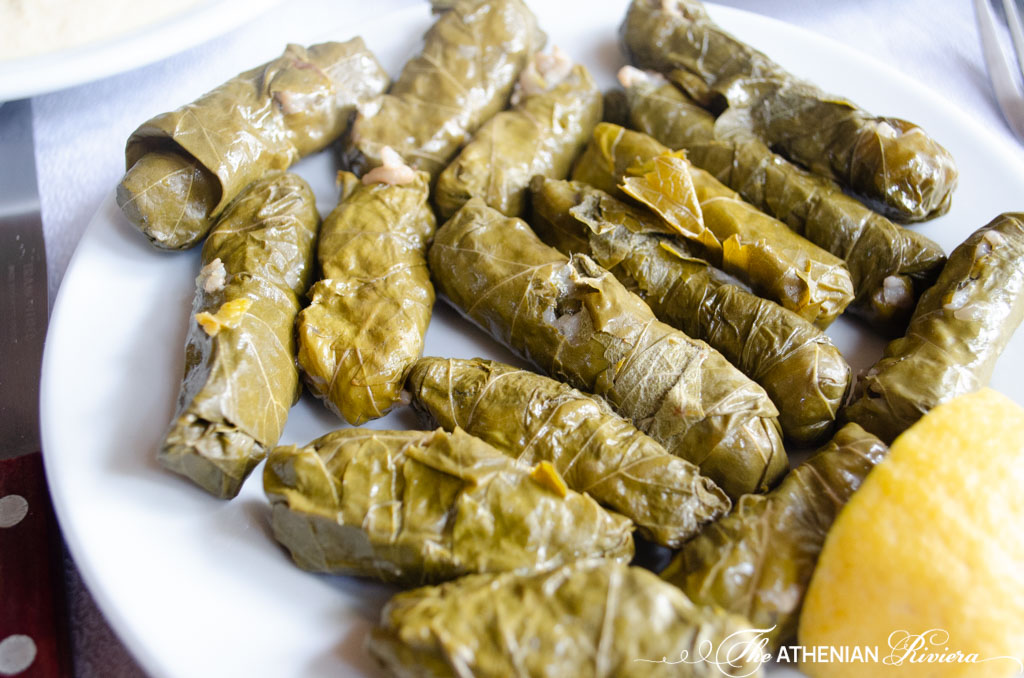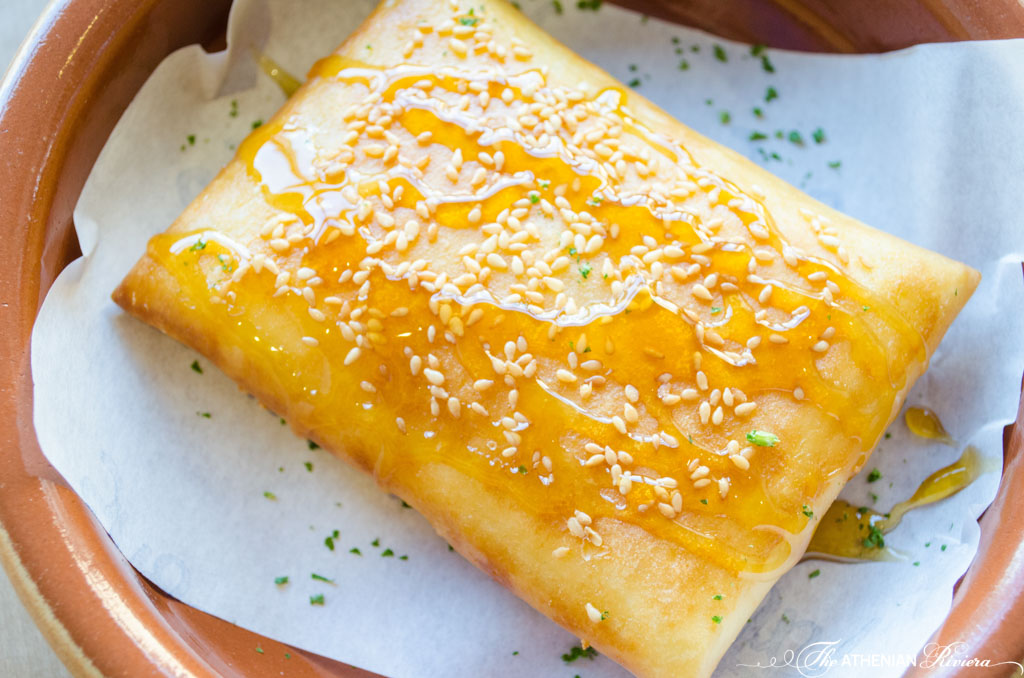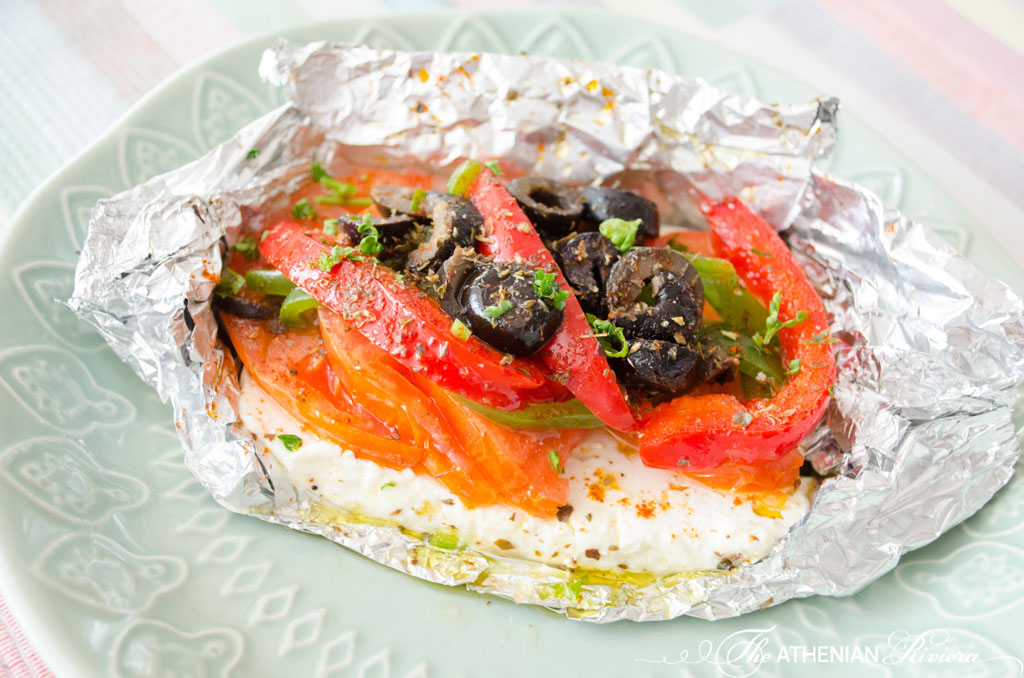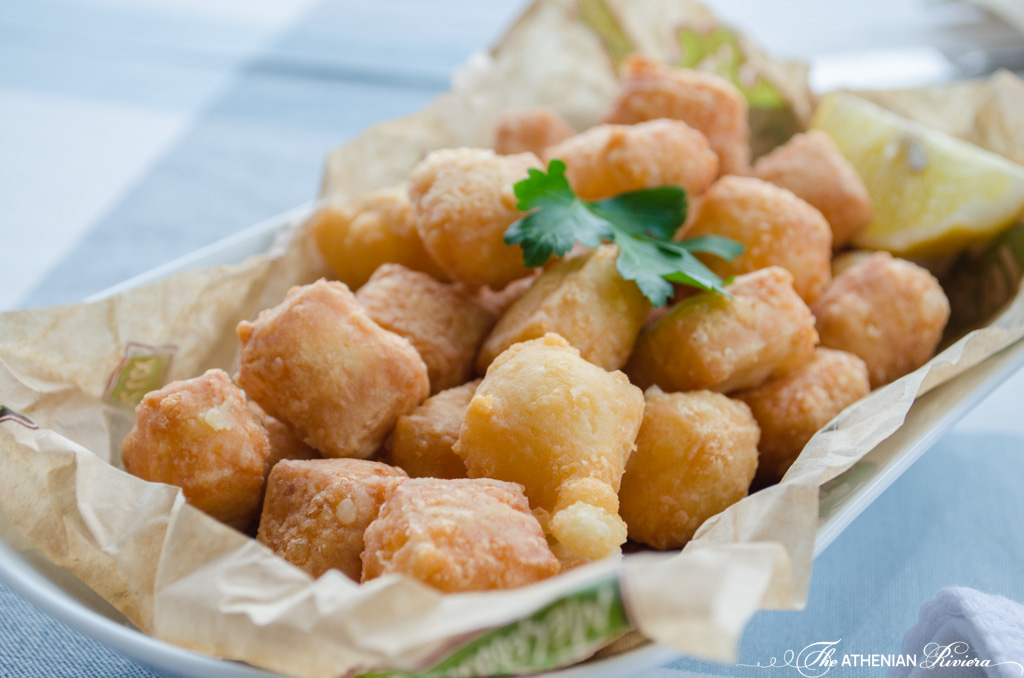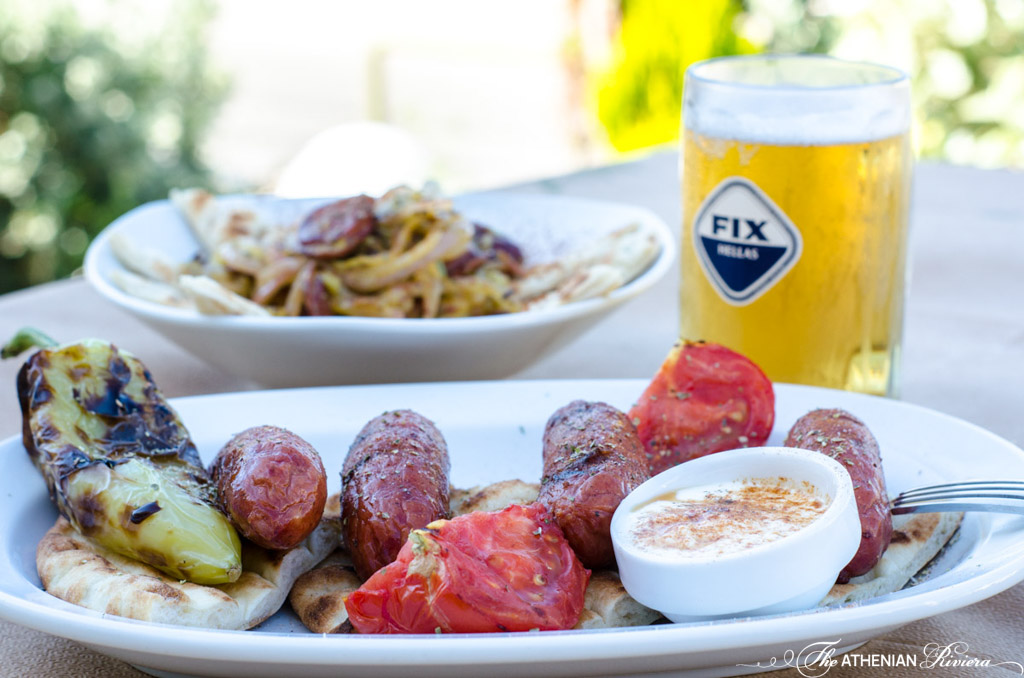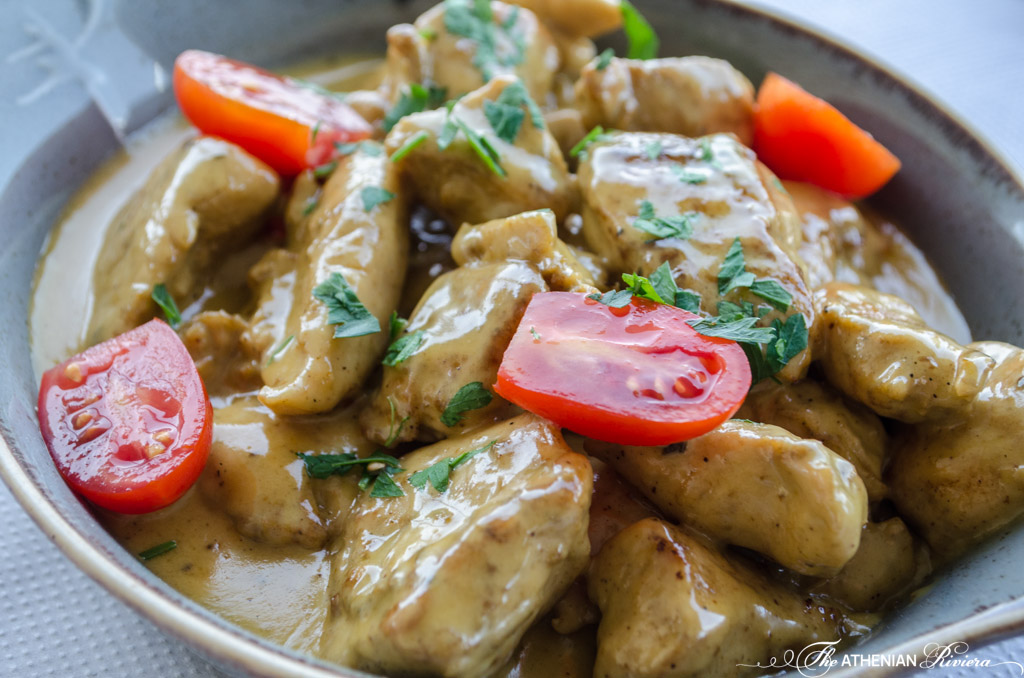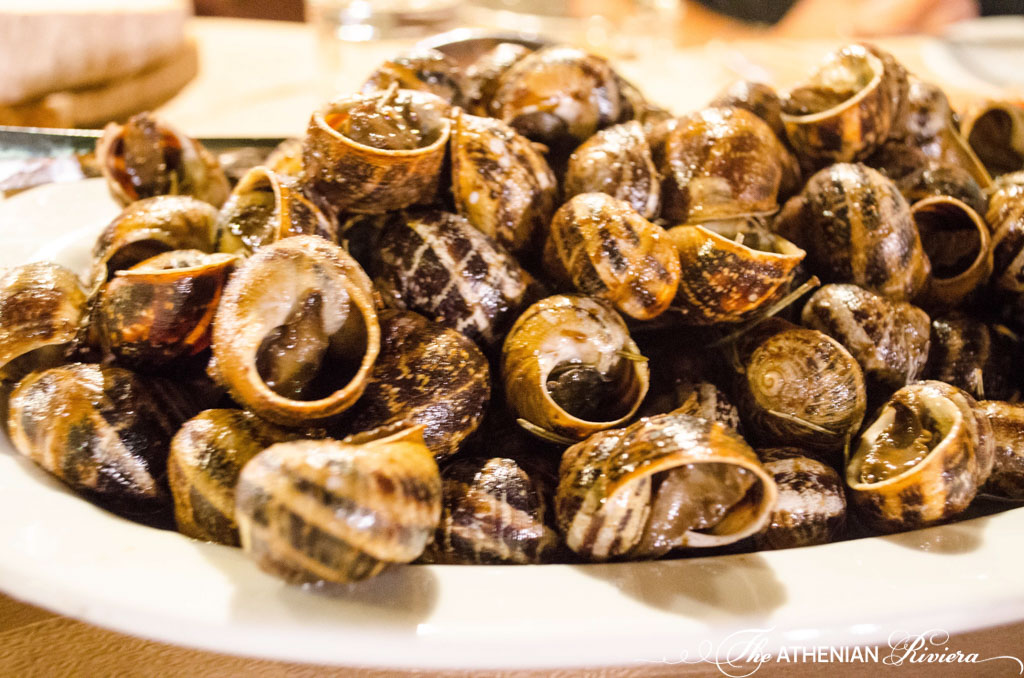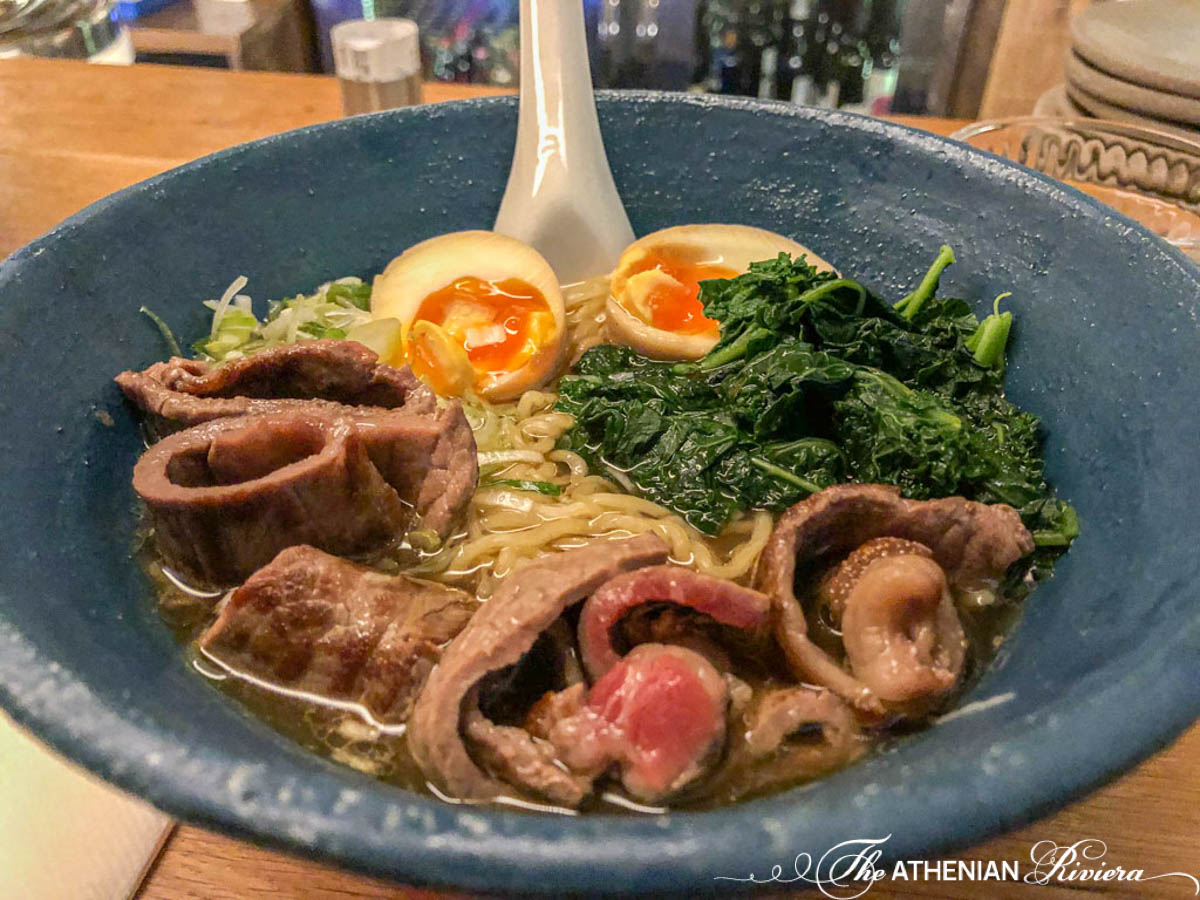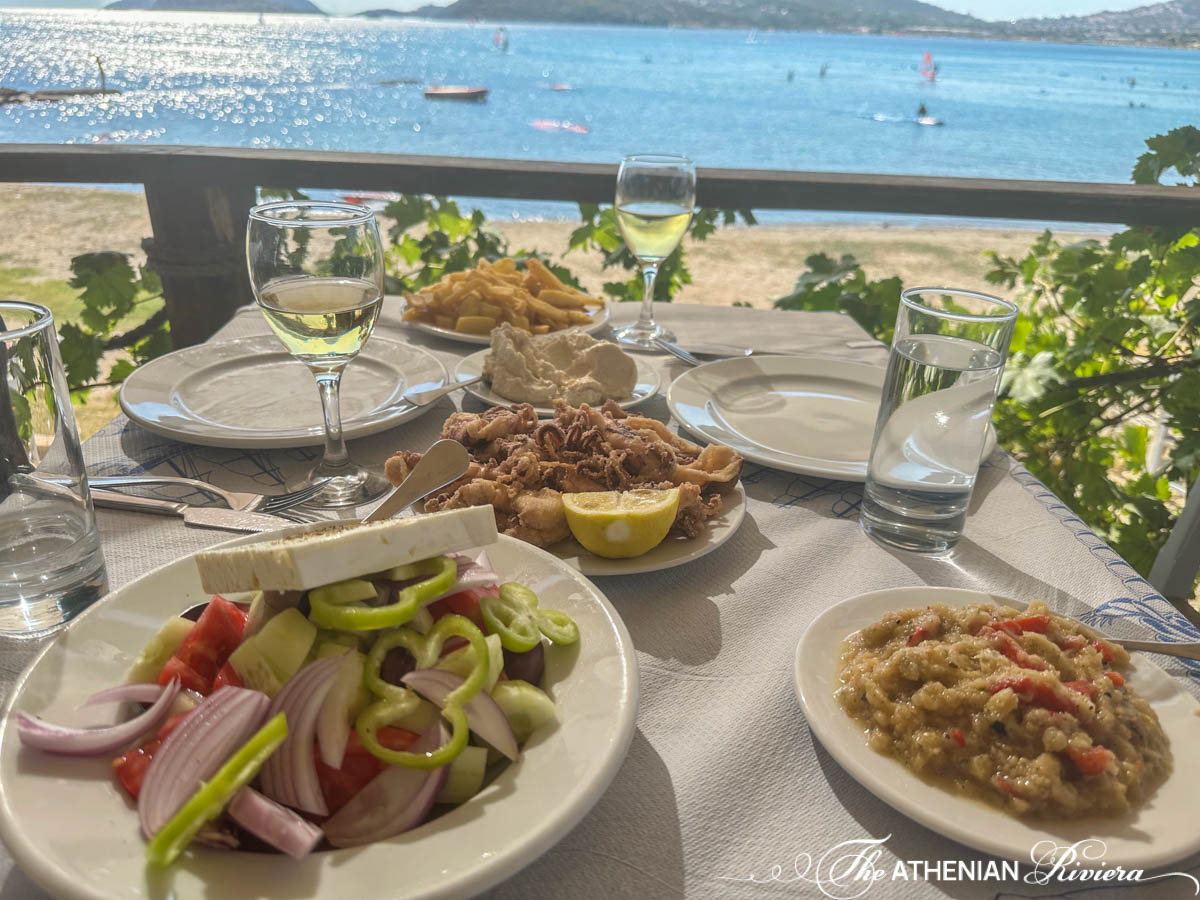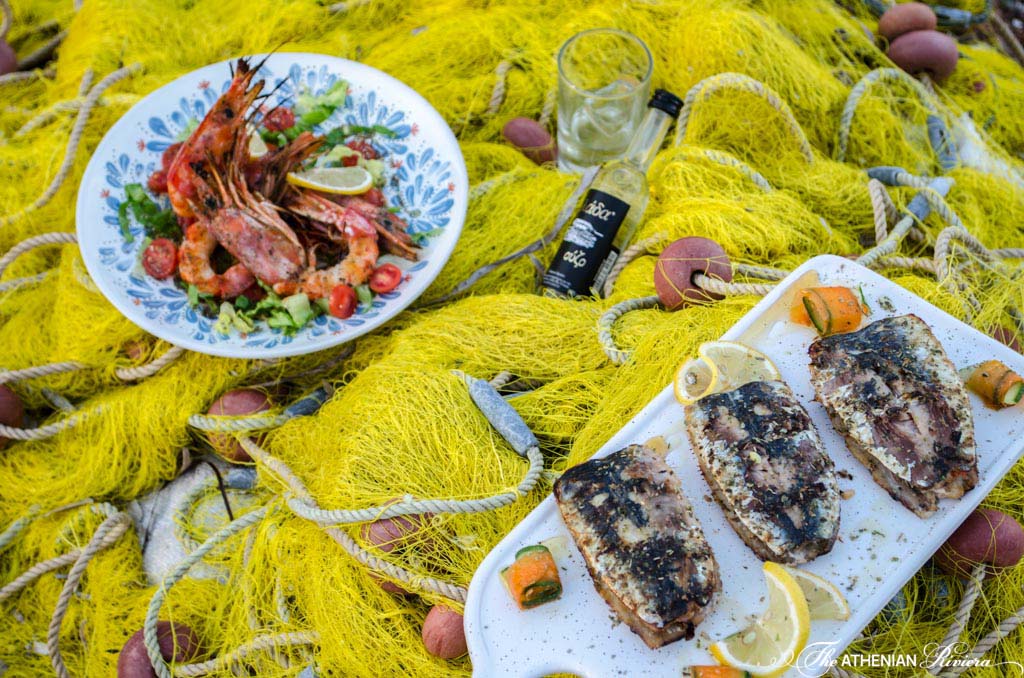
Master Greek Cuisine: The Ultimate Guide to Ordering Food in Greece
Greece is not only a land of ancient history and breathtaking landscapes but also a culinary paradise. Greek cuisine is bountiful, with its rich flavors, vibrant colors, and centuries-old traditions, offers something for every palate. Whether you’re a seasoned traveler or a first-time visitor, we’ve created this guide will help you navigate the delicious world of Greek food. From fresh salads to hearty meats and irresistible desserts, here’s what to order when you dine in Greece and how to master the Greek cuisine.
Master Greek Cuisine: The Ultimate Guide to Ordering Food in Greece
Salads: A Fresh Start
Greek Salad (Horiatiki Salata)
Region: Nationwide, with variations in every region. You will find this salad on every menu and trust me it’s the one salad that you will not get bored of eating on a daily basis.
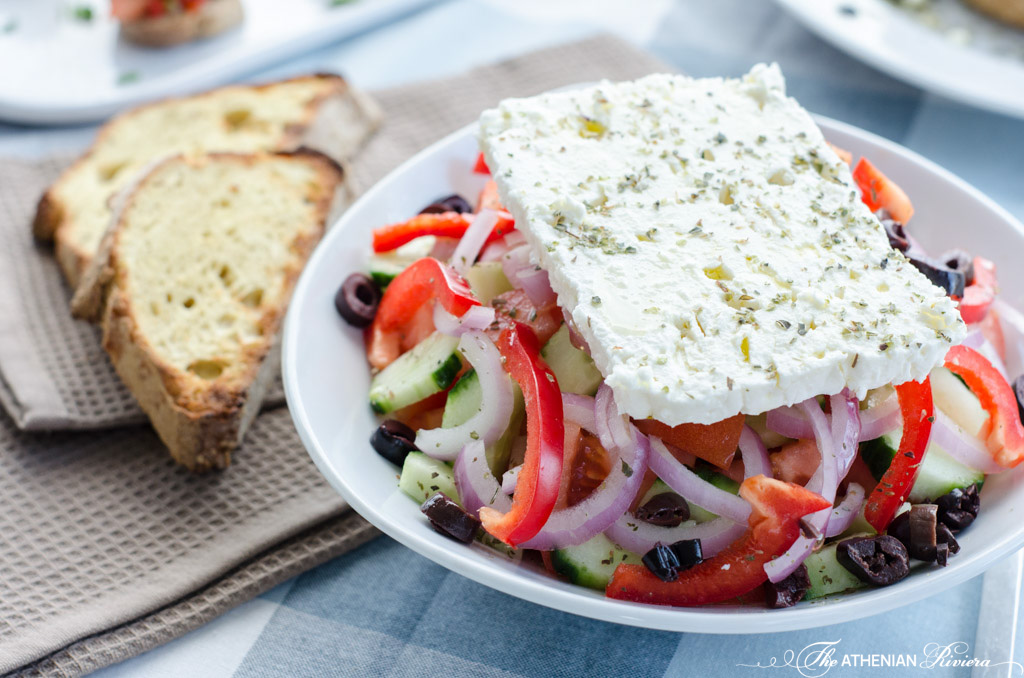 The quintessential Greek salad is a simple yet flavorful dish, composed of fresh tomatoes, cucumbers, red onions, olives, and feta cheese, all drizzled with olive oil and sprinkled with oregano. It’s a reflection of the Mediterranean diet and the importance of fresh, local produce.
The quintessential Greek salad is a simple yet flavorful dish, composed of fresh tomatoes, cucumbers, red onions, olives, and feta cheese, all drizzled with olive oil and sprinkled with oregano. It’s a reflection of the Mediterranean diet and the importance of fresh, local produce.
Cretan Dakos
Region: Originally from Crete, you can find Dakos in many restaurants across Greece as well as the Athenian Riviera
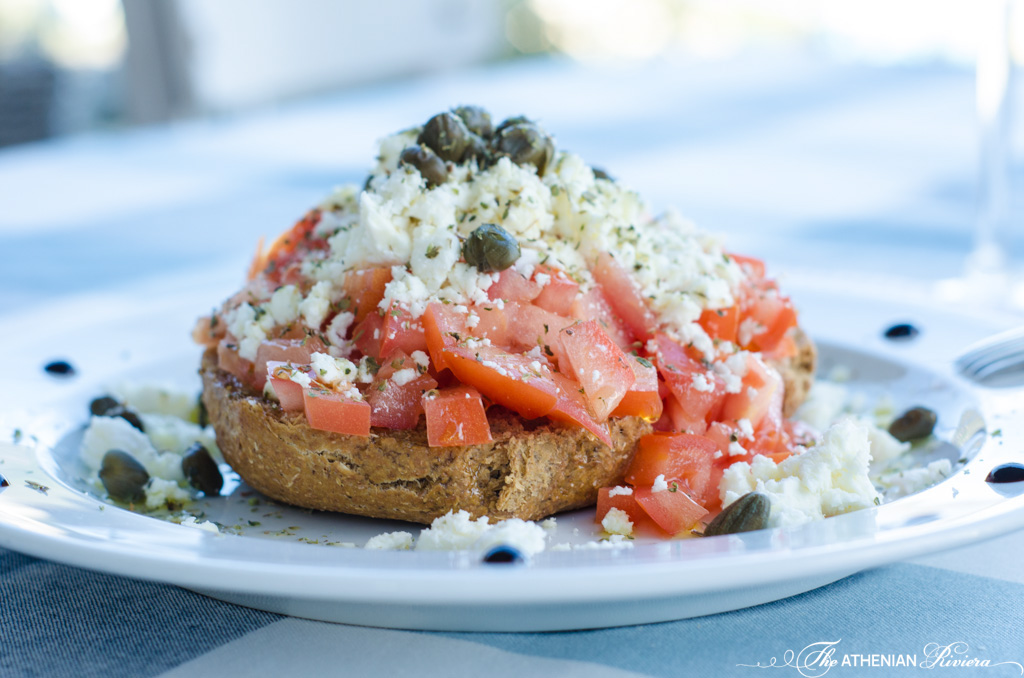
A traditional Cretan salad, Dakos or also known as koukouvagia (owl) features a base of barley rusk topped with grated tomatoes, crumbled mizithra cheese (or feta), olives, and capers. It’s a perfect example of how simple ingredients can create something truly special.
Vegetarian Delights: A Celebration of Vegetables
Spanakopita (Spinach Pie)
Region: Nationwide
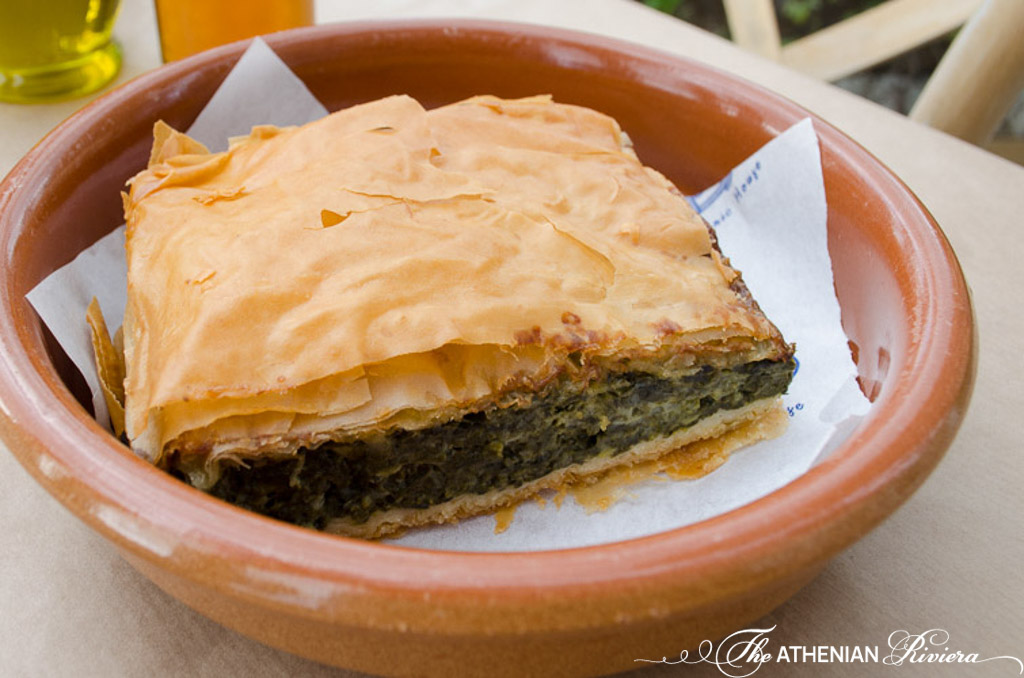
Layers of flaky phyllo dough are filled with a mixture of spinach, feta cheese, onions, and herbs. Spanakopita is a beloved Greek dish that can be found in almost every bakery and taverna across the country.
Gemista (Stuffed Vegetables)
Region: Nationwide
Gemista, which means “stuffed,” typically refers to tomatoes and bell peppers filled with a mixture of rice, herbs, and sometimes pine nuts or raisins. Each bite is a burst of Mediterranean flavors, and it’s a dish that showcases the abundance of fresh produce in Greek cuisine.
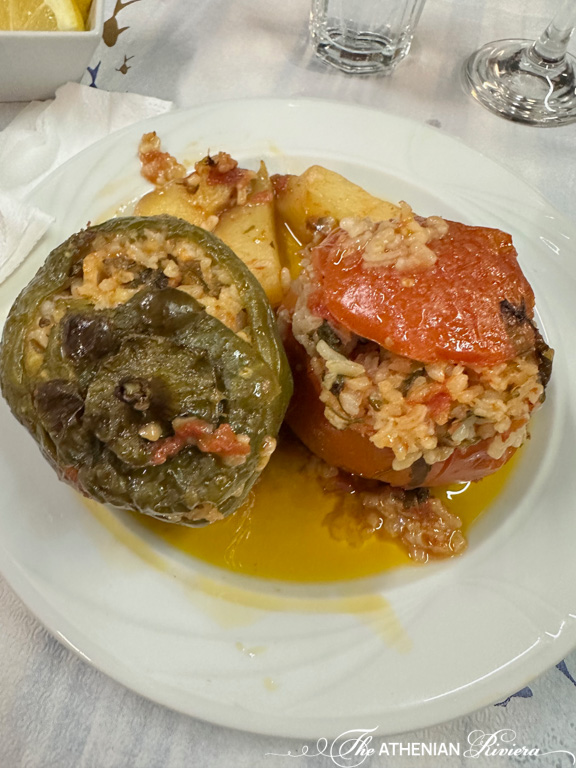 Fasolakia (Green Beans in Tomato Sauce)
Fasolakia (Green Beans in Tomato Sauce)
Region: Nationwide
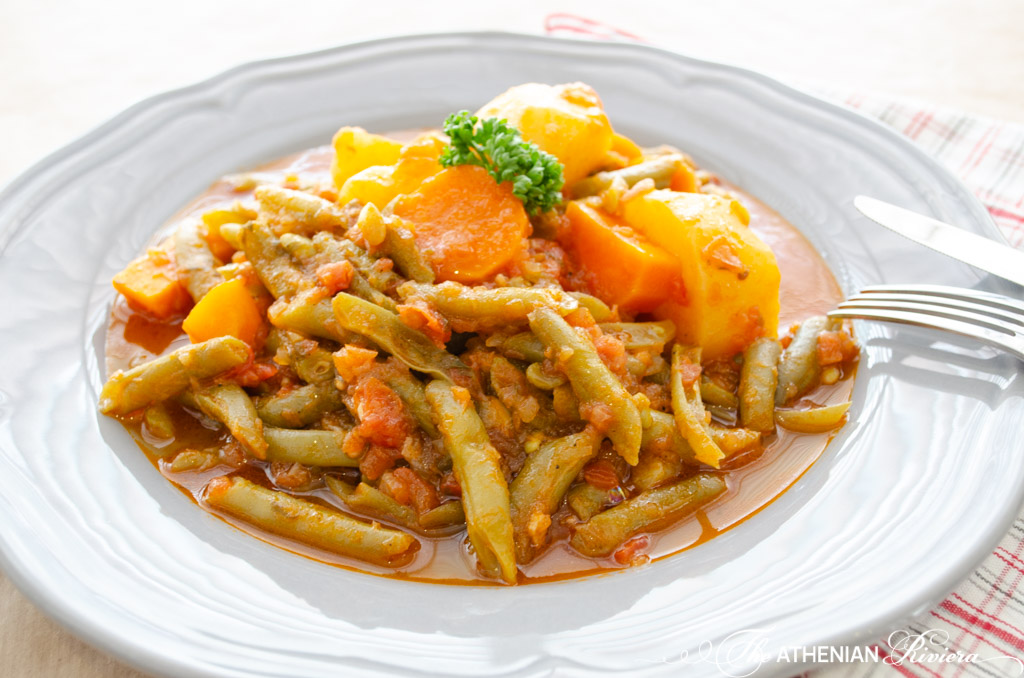
This humble yet flavorful dish consists of green beans stewed in a rich tomato sauce with onions, garlic, and olive oil. Fasolakia is often enjoyed as a main course or side dish, embodying the simplicity and healthfulness of Greek cooking.
Arakas Me Patates (Peas with Potatoes)
Region: Nationwide
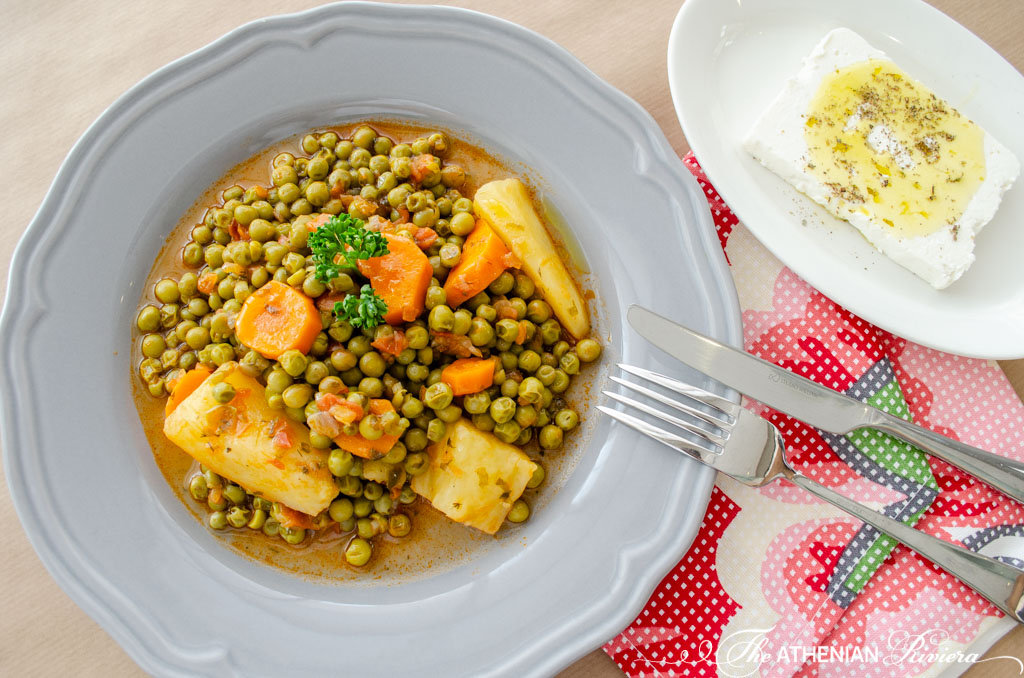
Arakas Me Patates is a comforting, home-cooked dish that combines tender green peas and potatoes stewed in a tomato-based sauce with onions, garlic, and dill. The slow cooking allows the flavors to meld together, creating a rich and satisfying dish that is both hearty and nutritious. Often enjoyed as a main course or a side, Arakas Me Patates is a perfect example of how Greek cuisine elevates simple, everyday ingredients into something truly special. It’s a staple in many Greek households, offering a taste of the countryside and the freshness of Mediterranean vegetables.
Stuffed Zucchini Flowers (Kolokythoanthoi Gemistoi)
Region: Nationwide, particularly in Crete and the Cyclades
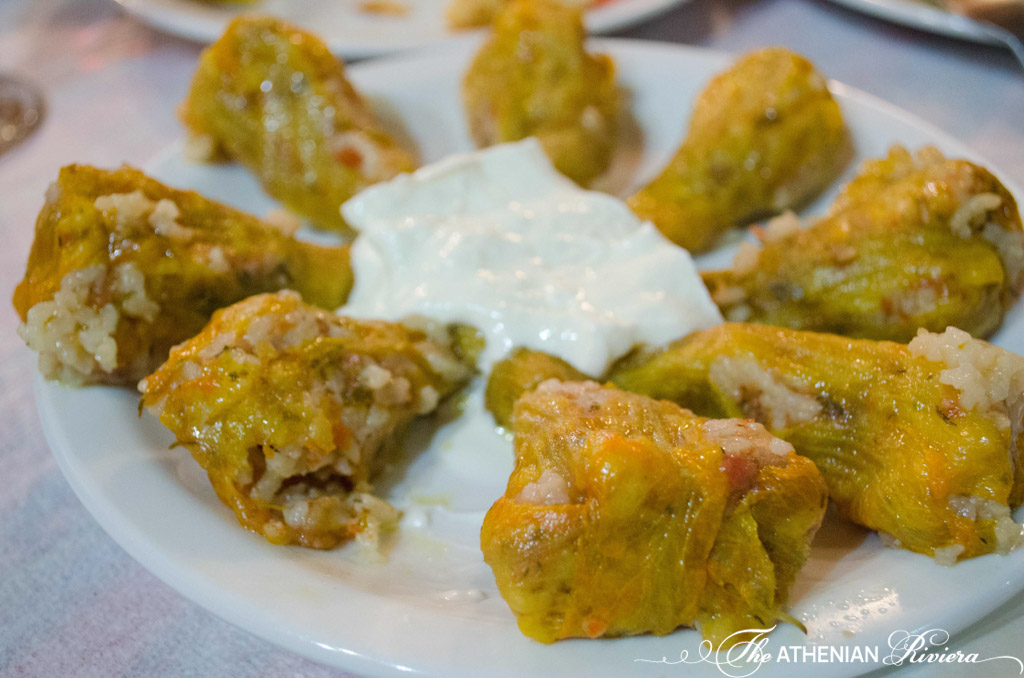
Stuffed Zucchini Flowers, or Kolokythoanthoi Gemistoi, are a delicate and exquisite dish that showcases the beauty and flavors of Greek summer produce. These vibrant yellow-orange zucchini blossoms are carefully filled with a mixture of rice, fresh herbs like dill and mint, and sometimes a touch of feta or soft cheese. The stuffed flowers are then gently baked or steamed, allowing the filling to meld with the subtle, earthy flavor of the blossoms. Stuffed Zucchini Flowers are a beloved dish, especially in the summer months when the blossoms are at their peak.
Giant Baked Beans (Gigantes)
Region: Nationwide, particularly popular in Northern Greece
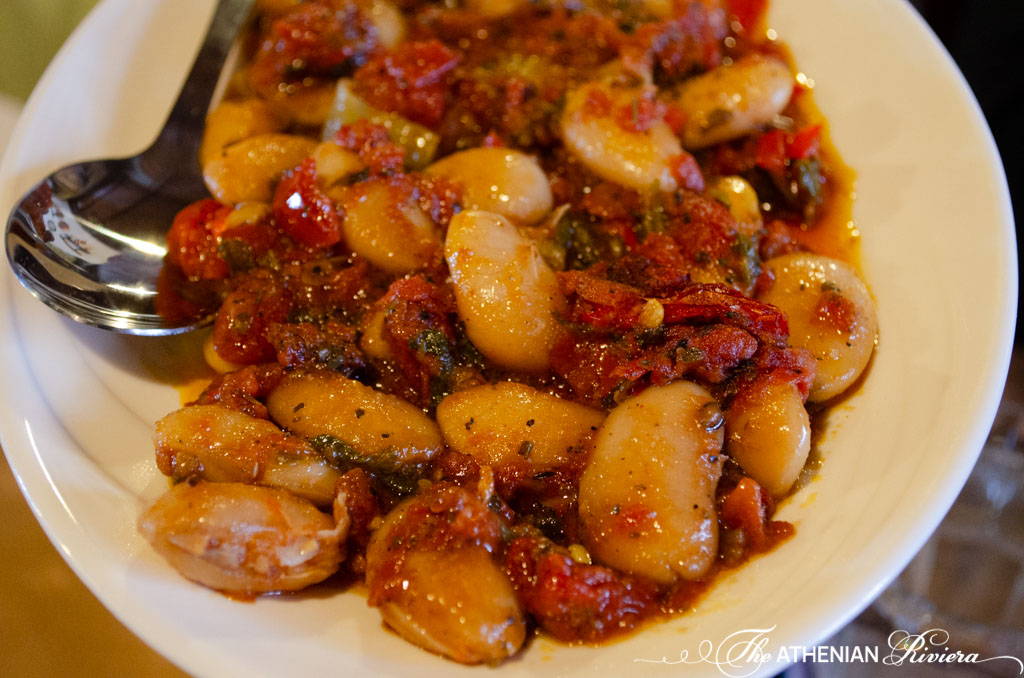
Gigantes, or Giant Baked Beans, is a beloved Greek dish that transforms humble ingredients into a hearty and flavorful comfort food. Large white beans, known as “gigantes,” are slow-cooked in a rich tomato sauce infused with onions, garlic, and a medley of herbs like parsley and dill. The beans absorb the tangy sweetness of the sauce, becoming tender and flavorful after hours of gentle baking.
Briam (Greek Roasted Vegetables)
Region: Nationwide, particularly popular in rural areas
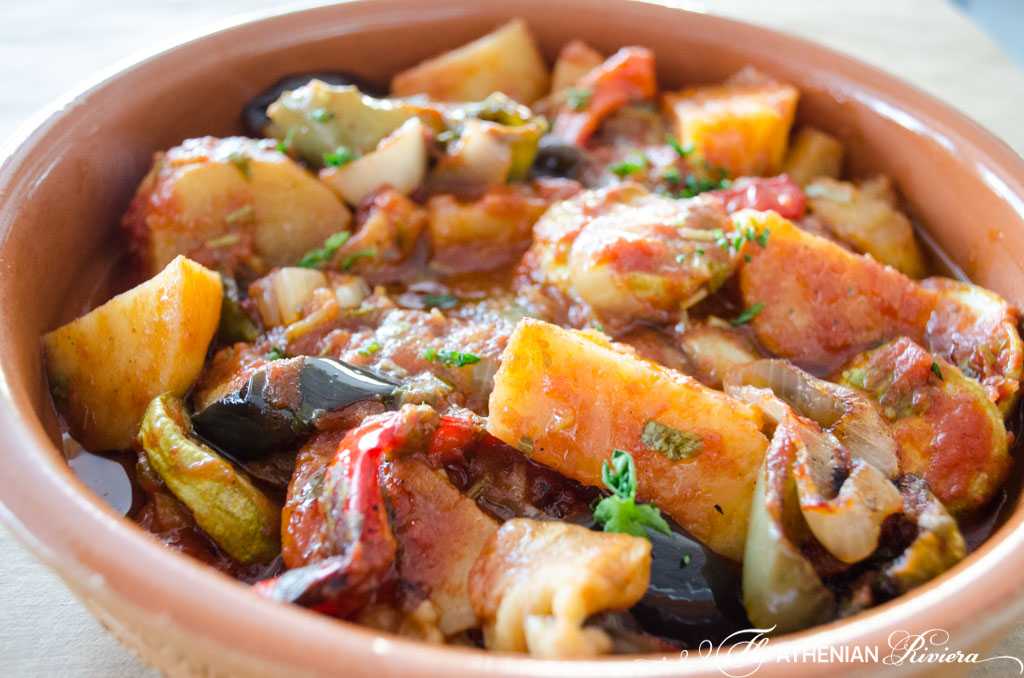
Briam is a traditional Greek dish that beautifully showcases the bounty of fresh, seasonal vegetables. Often referred to as Greek ratatouille, Briam is a simple yet flavorful oven-baked dish made with a variety of vegetables such as potatoes, zucchini, eggplant, tomatoes, and onions. The vegetables are thinly sliced, layered, and then generously coated with extra virgin olive oil, garlic, and a sprinkling of fresh herbs like oregano and parsley. They are slow-roasted until tender and caramelized, allowing the natural sweetness of the vegetables to shine through. Briam is typically served warm, often accompanied by a slice of crusty bread and a dollop of Greek yogurt or feta cheese. This dish embodies the essence of the Mediterranean diet, offering a healthy, satisfying, and vibrant taste of Greek countryside cooking.
Meats: The Hearty Side of Greek Cuisine
Souvlaki vs. Tylixto: Understanding the Difference
Souvlaki kalamaki
Region: Nationwide, also check out our post on the Best Souvlaki Shops in Glyfada
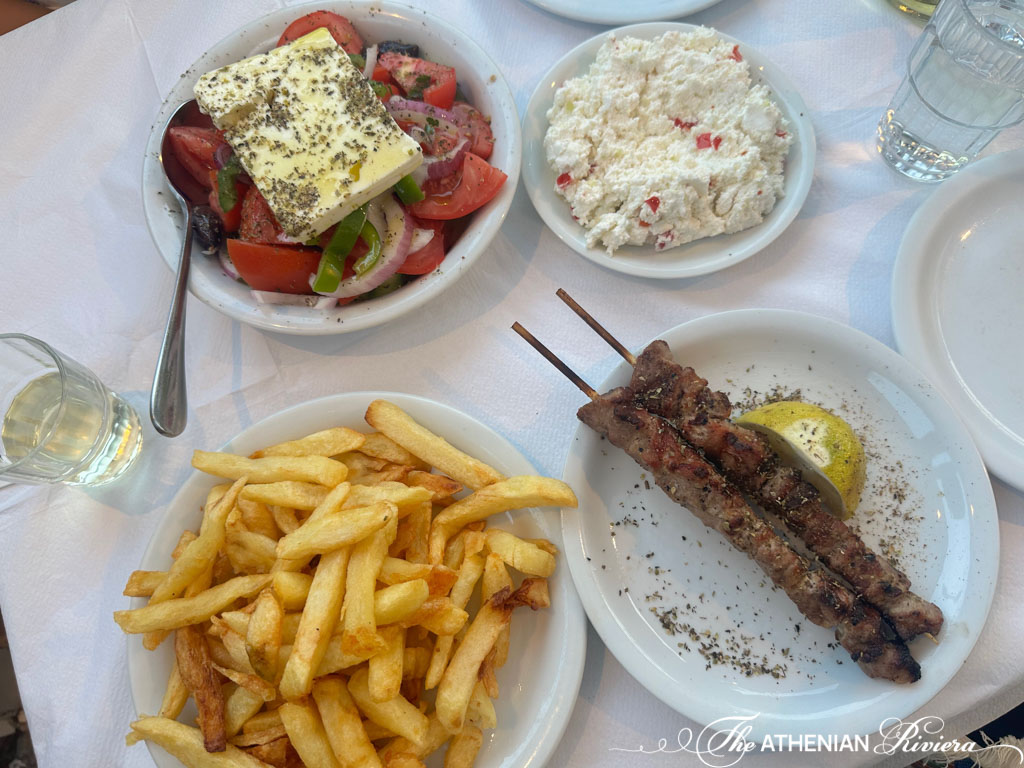
Souvlaki refers to the method of grilling small pieces of meat (usually pork, chicken, or lamb) on skewers. The term “souvlaki” itself comes from the Greek word “souvla,” meaning skewer. Souvlaki is typically served straight off the skewer, often accompanied by a side of pita bread, salad, or fries, and garnished with lemon wedges. This dish is a staple of Greek street food and is enjoyed in its simplest form as grilled meat on a stick.
Tylixto (Wrapped)
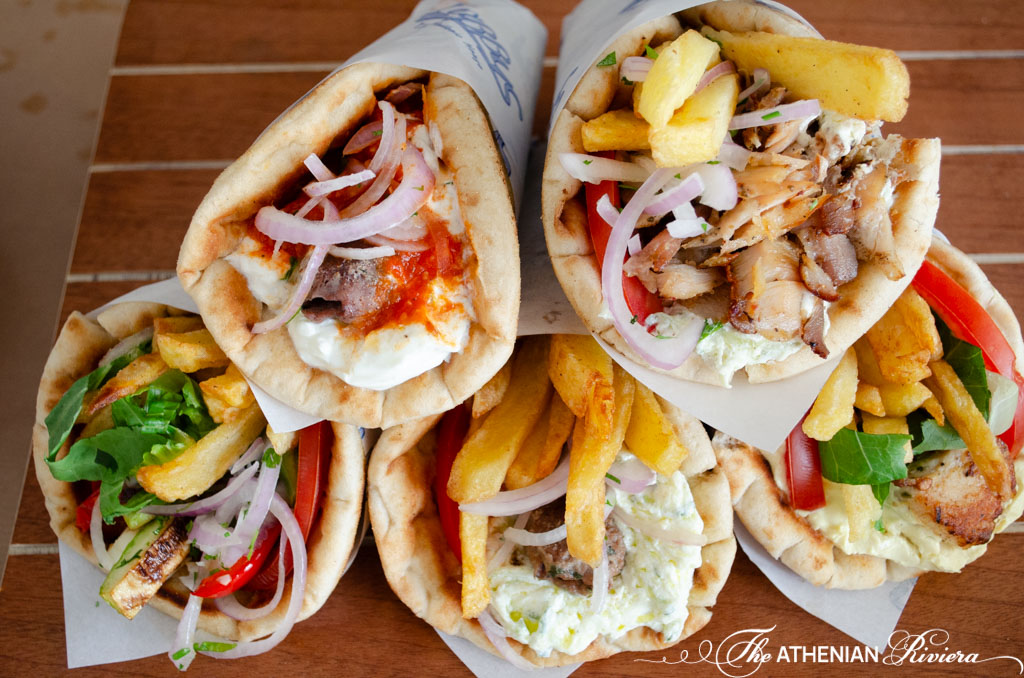
Tylixto, meaning “wrapped” in Greek, refers to a style of serving where grilled meat, such as souvlaki or gyros, is wrapped in a warm pita bread. The most common versions of tylixto include:
Souvlaki Tylixto: The meat from the souvlaki skewer is removed and placed inside the pita, along with sliced tomatoes, onions, tzatziki sauce, and sometimes fries. This creates a convenient, handheld meal that’s packed with flavor.
Gyros Tylixto: Gyros, another popular Greek meat preparation, is made by cooking seasoned meat (commonly pork, chicken, or lamb) on a vertical rotisserie. The meat is thinly sliced and then wrapped in pita bread with similar accompaniments as souvlaki tylixto: tomatoes, onions, tzatziki, and fries. The key difference is the preparation of the meat—gyros is marinated and cooked in layers on a rotisserie, resulting in a tender, flavorful bite with a slightly different texture from souvlaki.
Kleftiko
Region: Mainland Greece, particularly Central Greece
This slow-cooked lamb dish is wrapped in parchment paper and baked until the meat is tender and infused with the flavors of garlic, lemon, and herbs. The name “kleftiko” comes from the word “klefts,” referring to the mountain bandits who supposedly cooked their stolen meat this way.
Moussaka
Region: Nationwide
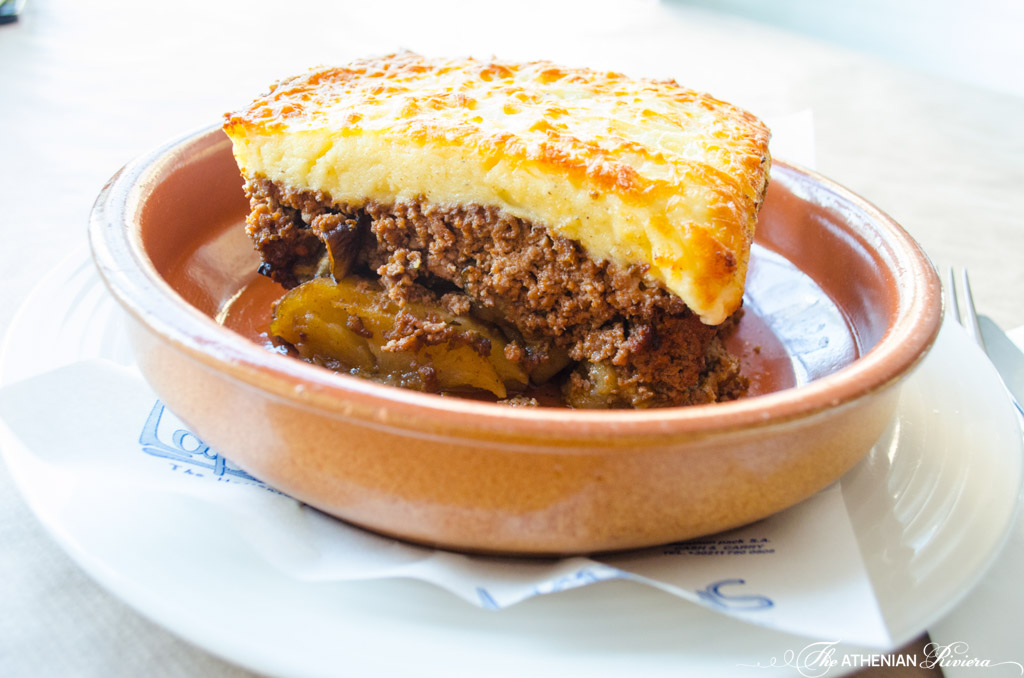
A dish with deep roots in the Balkans and the Middle East, moussaka is a hearty casserole made with layers of eggplant, minced meat (usually lamb or beef), and béchamel sauce. It’s baked to perfection, with a golden, creamy top that’s simply irresistible.
Paidakia (Grilled Lamb Chops)
Region: Nationwide, especially popular in the mountainous regions and during festive occasions

Lamb chops at George’s Steak house in Glyfada
Paidakia, or Grilled Lamb Chops, are a quintessential Greek dish that embodies the rustic and flavorful essence of the country’s culinary tradition. These tender lamb chops are typically marinated in a mixture of olive oil, lemon juice, garlic, and fresh herbs like oregano and thyme, which infuse the meat with vibrant, aromatic flavors. The lamb chops are then grilled over an open flame until they are perfectly charred on the outside and juicy on the inside. This dish is a favorite at Greek tavernas and is especially popular during celebrations and family gatherings, where the smoky aroma of grilled lamb fills the air and brings people together around the table.
Soutzoukakia (Greek Meatballs in Tomato Sauce)
Region: Nationwide, with origins in Smyrna (modern-day Izmir, Turkey)
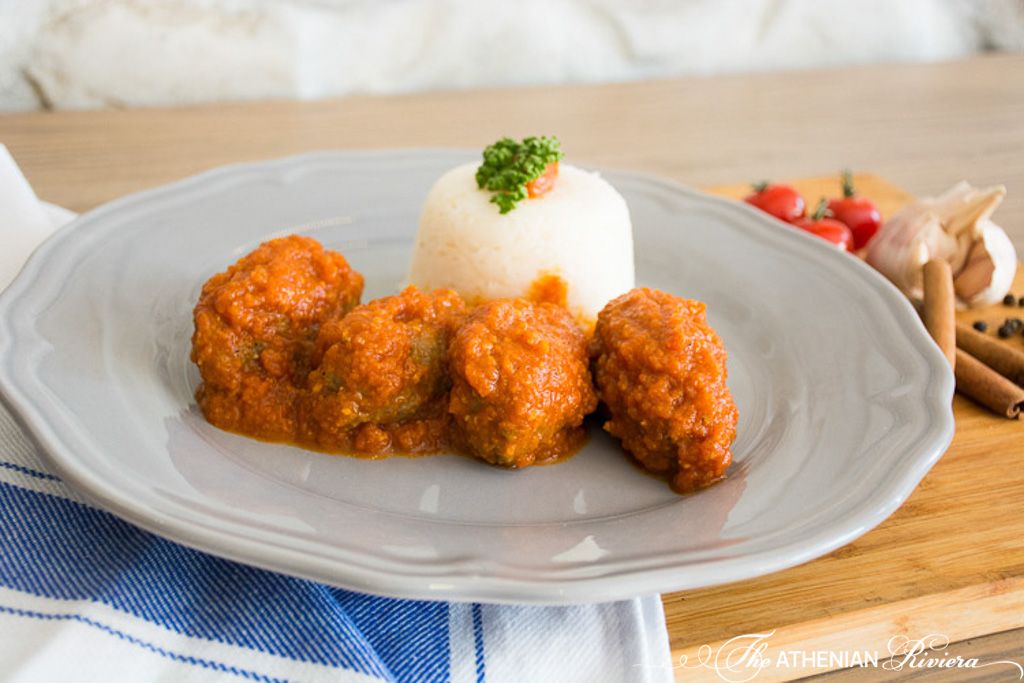
Soutzoukakia are a beloved Greek dish consisting of spiced meatballs simmered in a rich tomato sauce. Originating from the Greek communities of Asia Minor, particularly Smyrna, this dish brings together the aromatic flavors of cumin, garlic, and cinnamon, which are mixed into the ground meat (usually a combination of beef and pork). The meatballs are traditionally shaped into oval forms, seared until golden, and then gently cooked in a robust tomato sauce infused with red wine and a hint of spice. The sauce imparts a deep, savory flavor to the meatballs, making them tender and full of character. Soutzoukakia are typically served with rice or mashed potatoes, allowing the flavorful sauce to be fully enjoyed.
Yiaourtlou Kebab
Region: Nationwide, with roots in the Greek communities of Asia Minor

Yiaourtlou Kebab is a flavorful and hearty dish that brings together the rich culinary traditions of Greece and Asia Minor. This dish features juicy, spiced meat kebabs, typically made from ground lamb or beef, that are grilled to perfection. The kebabs are served on a bed of warm pita bread, which soaks up the delicious juices, and are generously topped with a tangy, creamy yogurt sauce. Often, a spoonful of rich tomato sauce is drizzled over the top, adding a layer of savory sweetness that complements the spiced meat. It’s a popular choice in Greek tavernas, especially for those who love the melding of grilled meats with cool, refreshing yogurt—a true feast for the senses. Tip: For a delicious yiaourtlou we recommend the Proedros in Glyfada or To Gnision in Voula.
Seafood: The Bounty of the Aegean
Grilled Octopus (Htapodi Sta Karvouna)
Region: Coastal regions, particularly the Aegean islands and all of the seafood tavernas along the Athenian Riviera
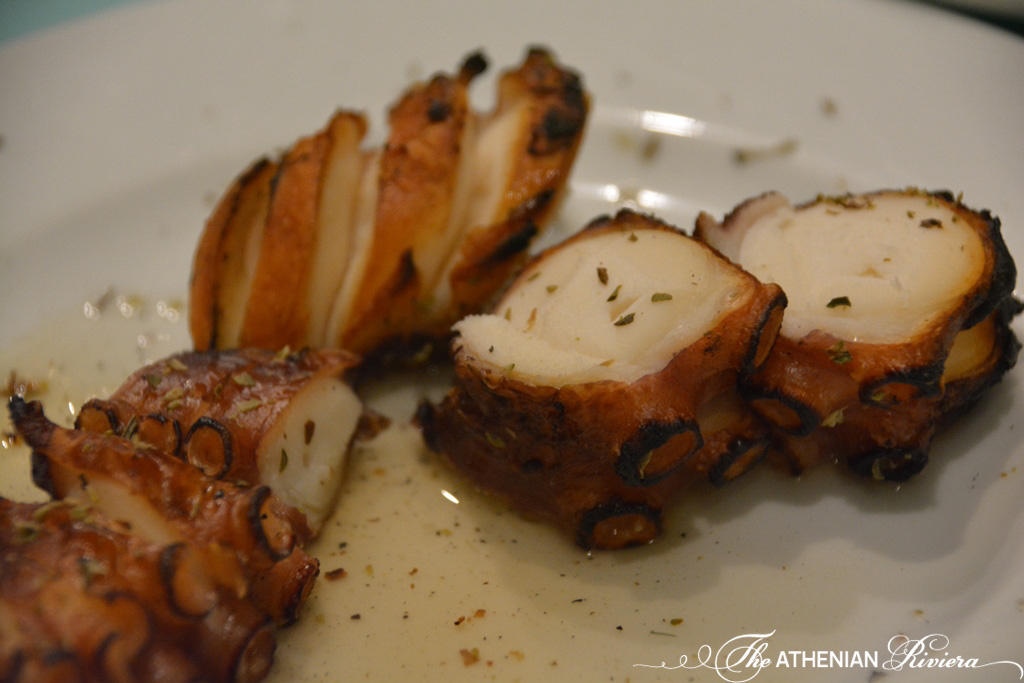
One of the most iconic seafood dishes in Greece, grilled octopus is a tender, smoky delight. The octopus is usually marinated in olive oil, vinegar, and herbs before being charred to perfection. It’s often served with a squeeze of lemon and a drizzle of olive oil. Another version of the octopus which is more tender is the htapodi ksidato which is cooked in vinegar sauce.
Calamari (Kalamarakia Tiganita) or Grilled
Region: Nationwide, with a special association with island regions

Calamari, or fried squid, is a popular appetizer or main course. The squid is lightly battered and fried until golden and crispy, then served with lemon wedges. Fresh and perfectly seasoned, it’s a must-try for seafood lovers. For a lighter version try the grilled calamari.
Gavros Marinatos (Marinated Anchovies)
Region: Coastal regions, particularly the islands and coastal towns of Greece.
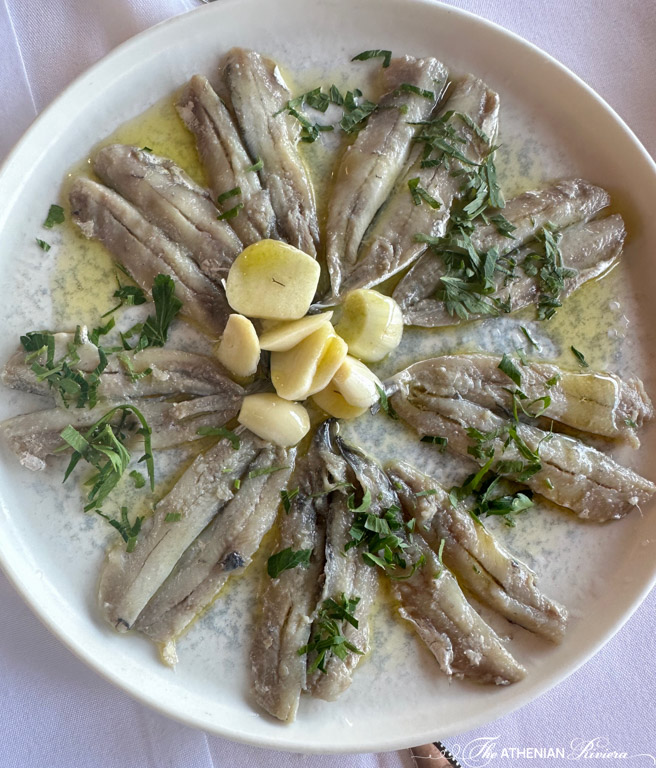
Gavros Marinatos, or marinated anchovies, is a beloved meze. Fresh anchovies are cleaned, filleted, and then marinated in a mixture of vinegar, olive oil, garlic, and herbs, sometimes with a hint of lemon. This process not only enhances the flavor of the fish but also tenderizes it, resulting in a delicate and tangy treat. Served cold, usually with crusty bread or as part of a larger meze spread, Gavros Marinatos offers a bright, refreshing taste of the sea that pairs beautifully with a glass of ouzo or a crisp white wine.
Garides Saganaki (Shrimp Saganaki)
Region: Nationwide, particularly in coastal areas
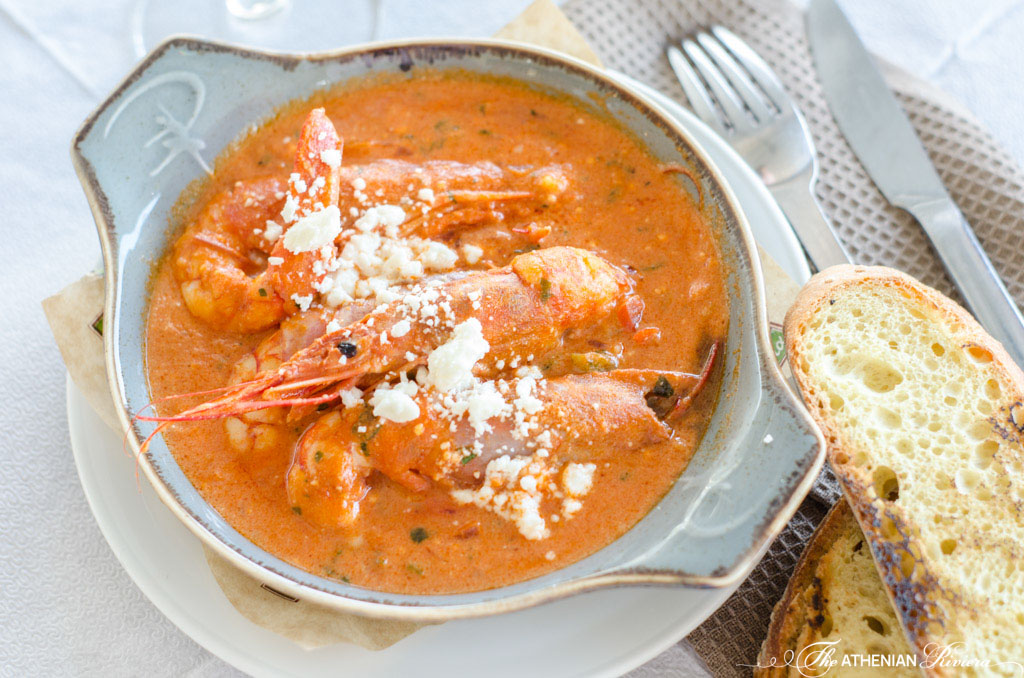
This dish features succulent shrimp cooked in a rich tomato sauce with garlic, onions, and feta cheese. Served in a sizzling skillet, Garides Saganaki is a perfect blend of flavors, with the tangy tomato and creamy feta complementing the sweetness of the shrimp.
Psarosoupa (Fish Soup)
Region: Nationwide, especially in fishing communities
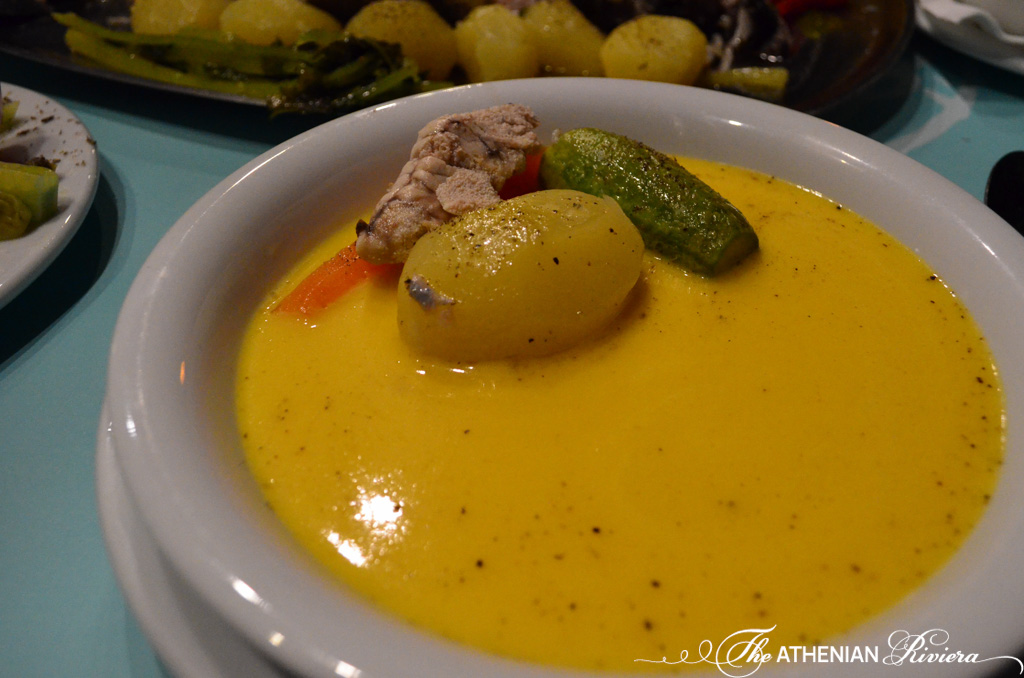
Psarosoupa is a traditional Greek fish soup, typically made with a variety of fresh fish, vegetables, and herbs. It’s a hearty, warming dish, often served with a squeeze of lemon juice. The soup is a true reflection of Greece’s deep connection to the sea.
Grilled Sardines (Sardeles Sta Karvouna)
Region: Coastal regions, particularly in the islands
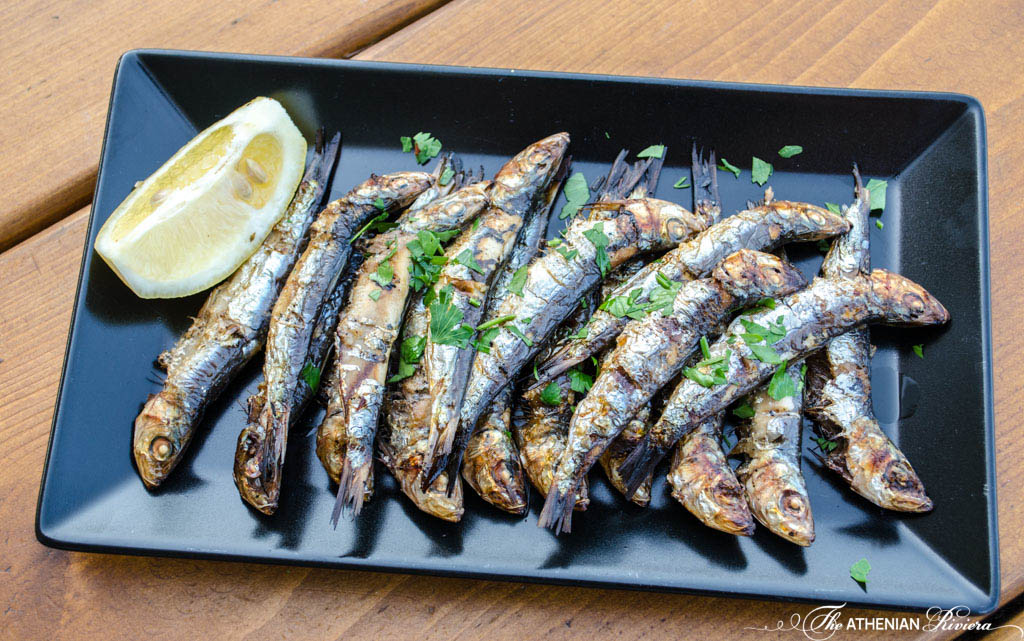
Grilled sardines are a simple yet flavorful dish that highlights the freshness of Mediterranean seafood. The sardines are lightly seasoned with olive oil, lemon, and oregano, then grilled over an open flame until crispy on the outside and tender on the inside. Often served with a side of lemon wedges and a sprinkle of sea salt, these sardines are a quintessential Greek seafood experience, perfect for enjoying at a seaside taverna.
Steamed Mussels (Midia Axnista)
Region: Coastal regions, particularly Northern Greece and the Aegean islands
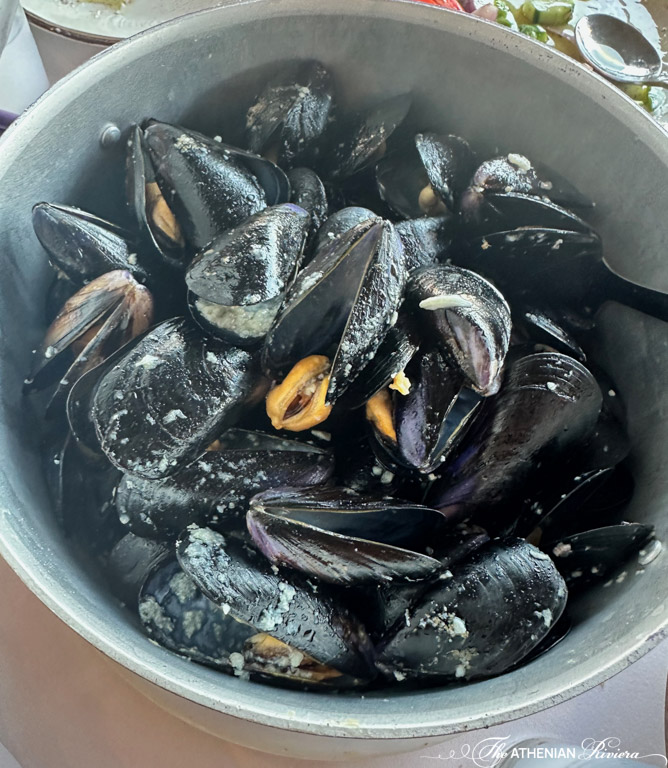
At Theodoros and Eleni they are served in a big pot
Steamed Mussels or Midia Axnista is a quintessential Greek seafood dish that captures the essence of the Mediterranean Sea. Fresh mussels are gently steamed in a fragrant broth made with white wine, garlic, onions, and herbs like parsley and dill. The steaming process opens the mussels, infusing them with the aromatic flavors of the broth. Often finished with a squeeze of lemon juice and a drizzle of olive oil, Axnista Midia is served hot, accompanied by crusty bread to soak up the delicious juices. Tip: for the best midia axnista head over to Theodoros and Eleni in Legrena.
Bakaliaros Skordalia (Fried Cod with Garlic Sauce)
Region: Nationwide, traditionally associated with March 25th celebrations
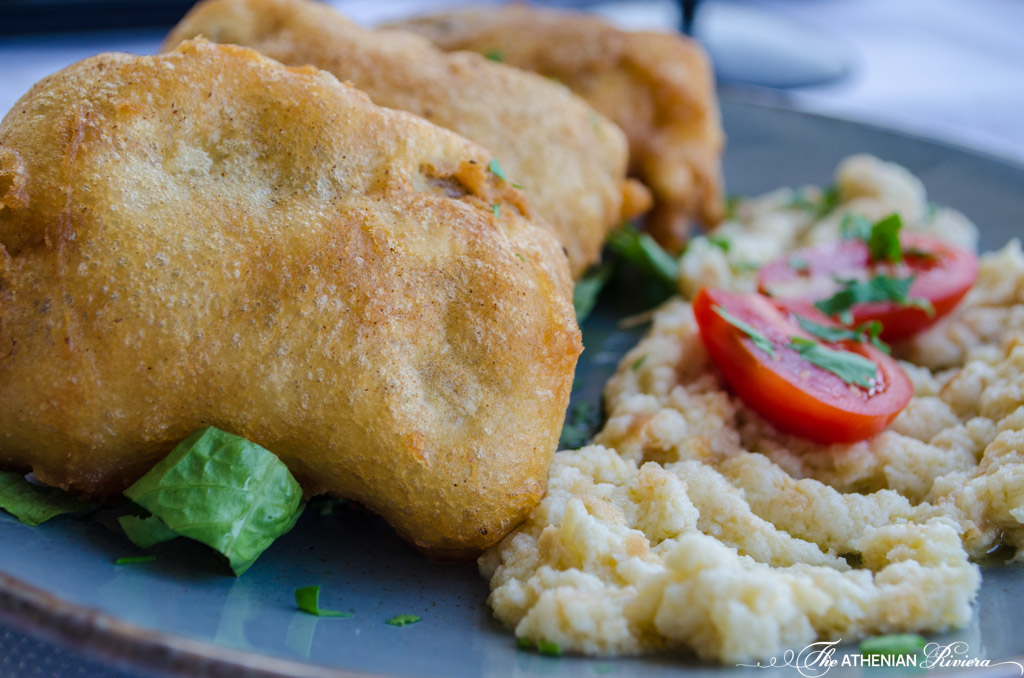
Bakaliaros Skordalia is a classic Greek dish consisting of salted cod that is battered and fried to a golden crisp, served alongside a robust garlic sauce known as skordalia. This dish is traditionally enjoyed on March 25th, Greece’s Independence Day, but is also popular year-round. The combination of the crispy fish and the creamy, pungent skordalia makes for a dish that’s rich in flavor and steeped in tradition, offering a perfect balance of textures and tastes.
Red Mullet (Barbounakia)
Region: Coastal regions, particularly the Aegean Sea and Ionian islands
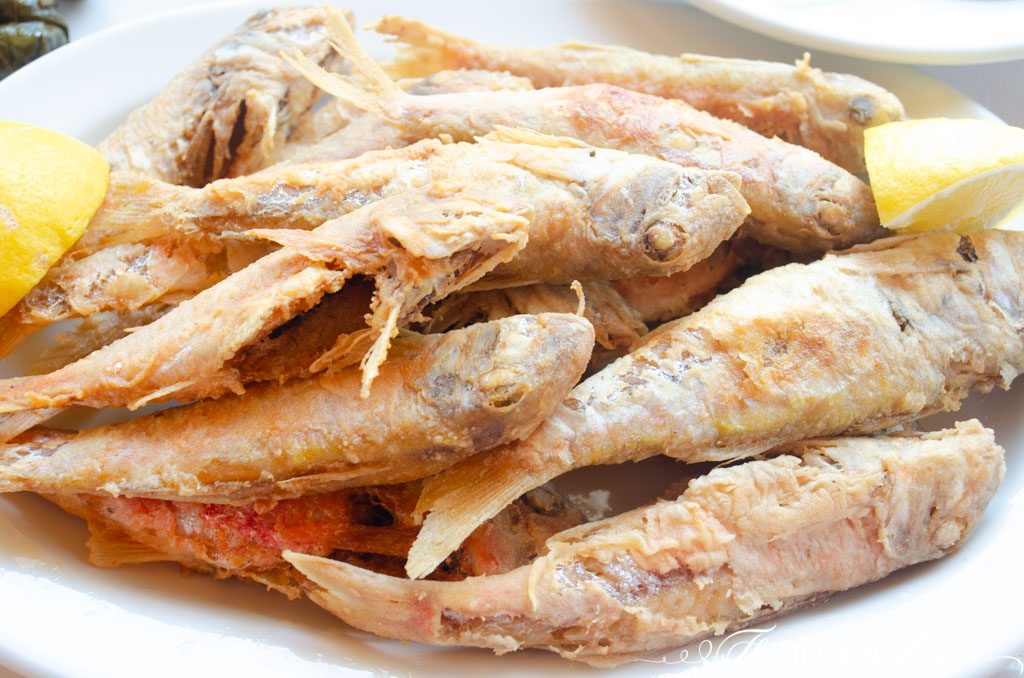
Barbounakia, or Red Mullet, is a prized delicacy in Greek seafood cuisine, known for its delicate, sweet flavor and tender flesh. These small, vibrant fish are typically grilled or lightly fried, often with a simple seasoning of sea salt, pepper, and a squeeze of fresh lemon. Barbounakia are usually served whole, allowing you to appreciate their beautiful pinkish-red skin, and are often accompanied by a side of horta (wild greens) or a fresh salad. This dish is a favorite in seaside tavernas, offering a taste of the sea that is as authentic as it is delicious.
Lobster Pasta (Astakomakaronada)
Region: Cyclades and other island regions
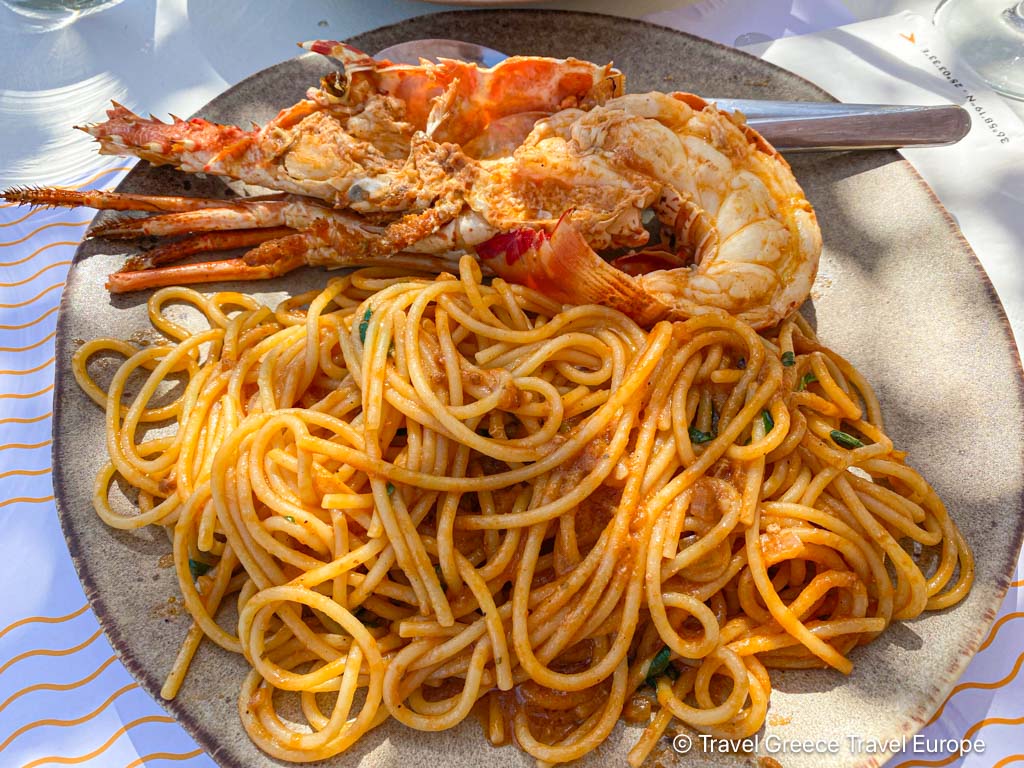
A luxurious dish, Astakomakaronada features fresh lobster cooked in a rich tomato sauce and served over pasta. It’s a favorite on the islands, particularly in the summer, where the fresh catch of the day often includes these prized crustaceans.
Pasta and Grains: A Twist on the Familiar
Pastitsio
Region: Nationwide
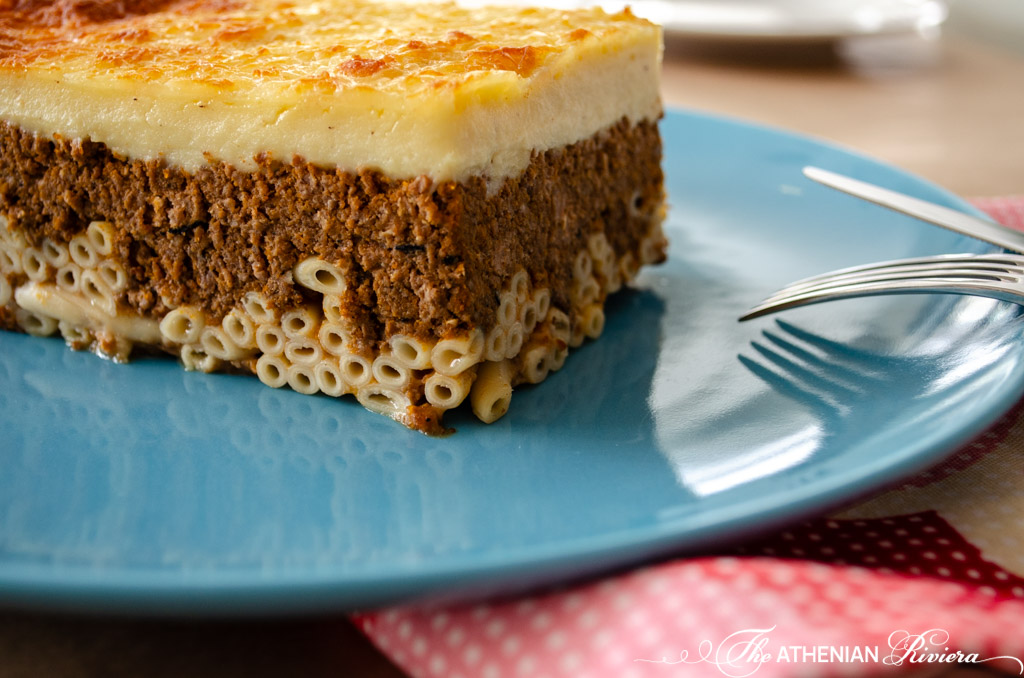
Often referred to as Greek lasagna, pastitsio is a baked pasta dish with layers of tubular pasta, spiced meat (usually beef or lamb), and béchamel sauce. It’s a comforting, filling dish that’s perfect for family gatherings.
Kritharoto (Orzo with Lamb)
Region: Cyclades
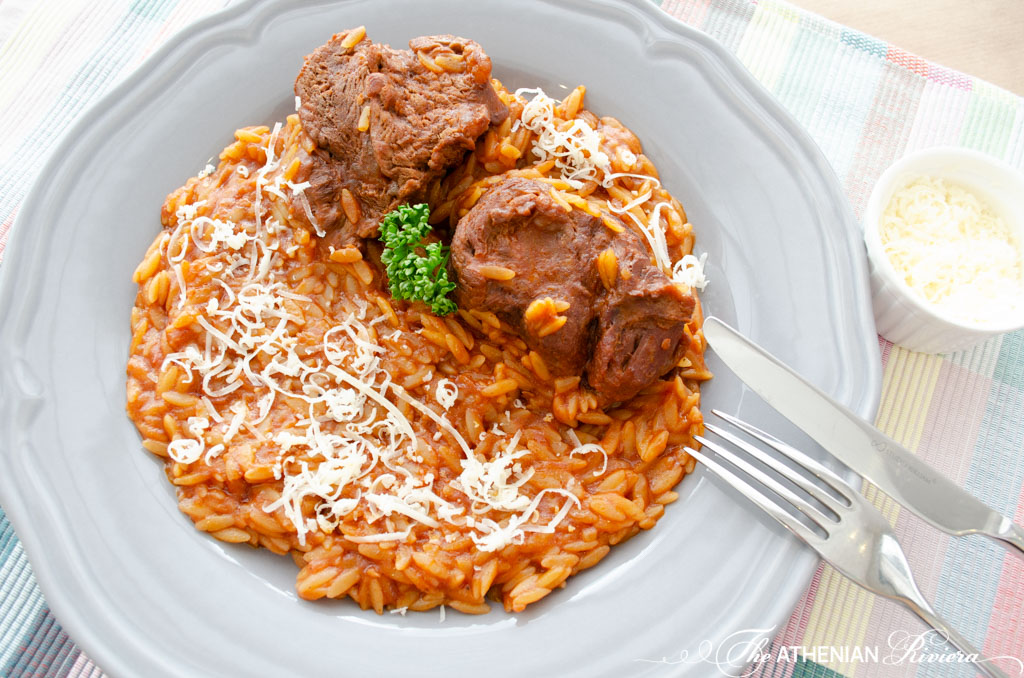
A traditional dish from the Cycladic islands, Kritharoto is made with orzo (a rice-shaped pasta) cooked with tender lamb, tomatoes, and spices. It’s a rich and flavorful dish that highlights the simplicity and depth of Greek island cuisine.
Hilopites
Region: Peloponnese and Central Greece
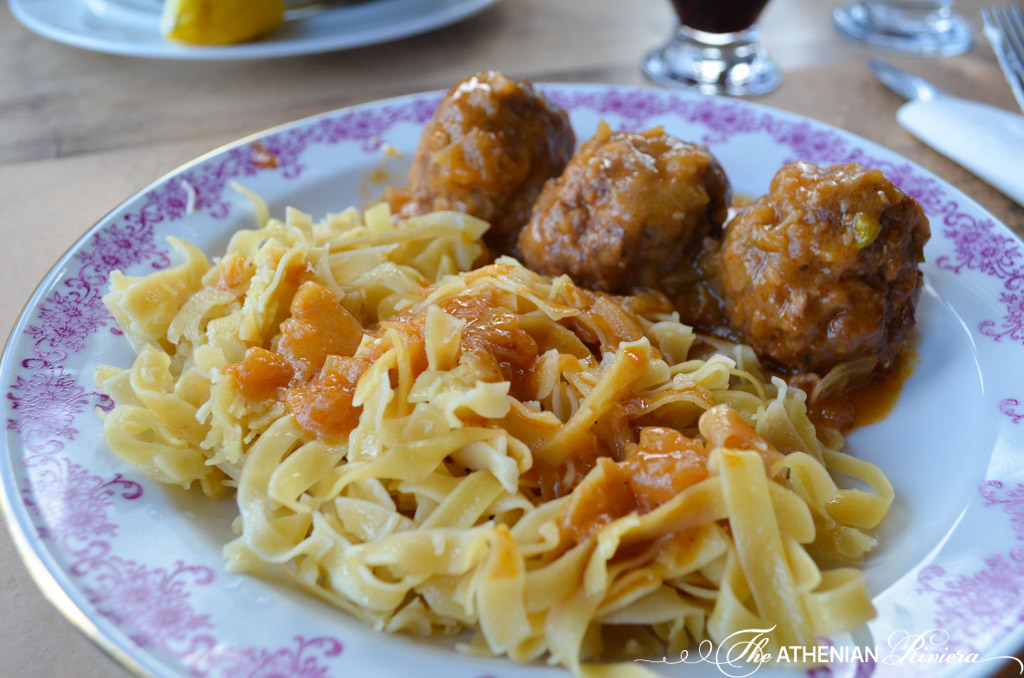
Hilopites are small, square-shaped pasta made from wheat flour, eggs, and milk. They are often cooked with chicken or lamb in a tomato-based sauce, making for a rustic and hearty meal that’s deeply rooted in Greek tradition.
Spaghetti Me Thalassina (Seafood Spaghetti)
Region: Coastal regions, particularly the islands and seaside towns
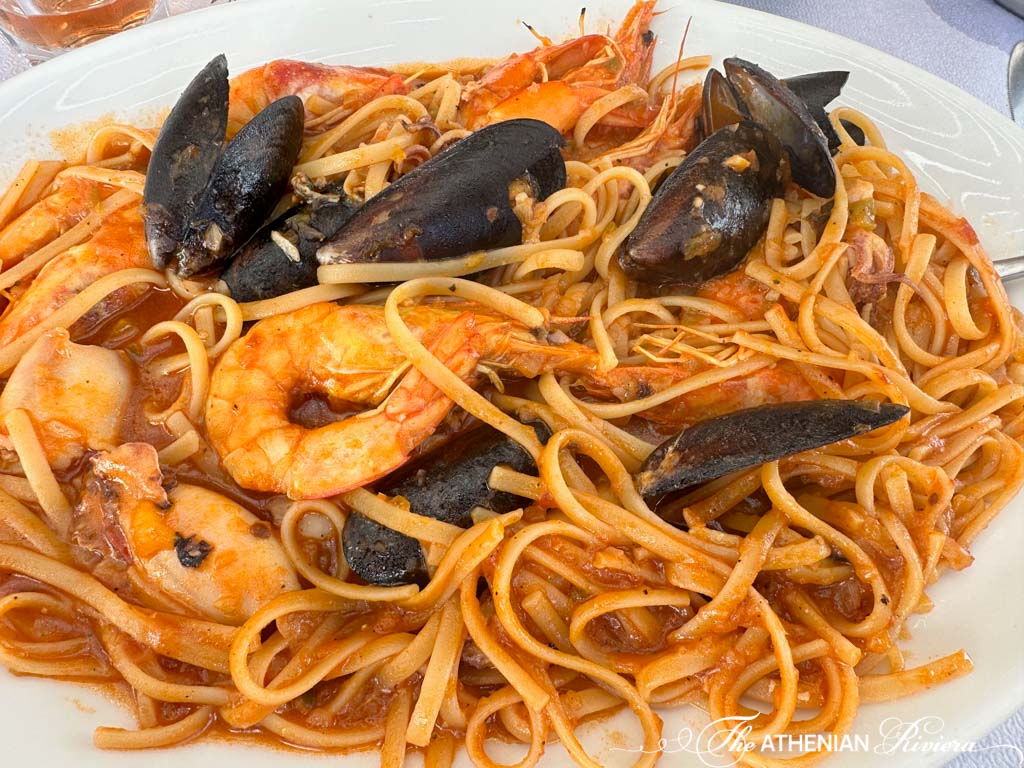
Background: Spaghetti Me Thalassina is a delightful Greek pasta dish that celebrates the flavors of the sea. This dish features al dente spaghetti tossed with a variety of fresh seafood, such as mussels, shrimp, calamari, and clams, all sautéed in a savory sauce made with garlic, olive oil, tomatoes, and white wine. Spaghetti Me Thalassina is a popular choice in seaside tavernas, offering a taste of the Mediterranean that is both light and satisfying.
Desserts: A Sweet Finale
Baklava
Region: Nationwide, with regional variations
Perhaps the most famous of Greek desserts, baklava is a rich, sweet pastry made of layers of phyllo dough filled with chopped nuts and sweetened with honey or syrup. It’s a decadent treat that’s been enjoyed in Greece for centuries.
Galaktoboureko
Region: Nationwide
This dessert is a luscious combination of semolina custard wrapped in phyllo dough and soaked in a citrus-infused syrup. Galaktoboureko is a favorite in many Greek households, especially during festive occasions.
Loukoumades
Region: Nationwide, with a special association with Thessaloniki

Loukoumades are small, deep-fried dough balls that are crispy on the outside and soft on the inside. They are traditionally drizzled with honey and sprinkled with cinnamon or powdered sugar, making them a delightful, bite-sized treat.


